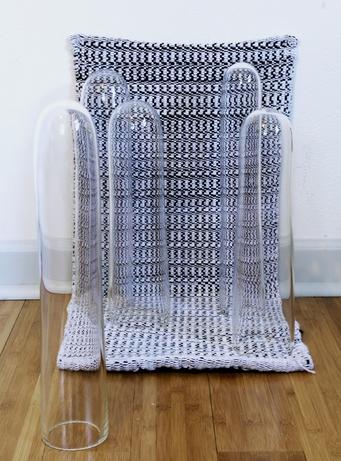

ART


HA B E N S
Michael Endy USA




I have lived and loved and won and lost in New Jersey since last century, which is just about the time it takes to get to know a place. New Jersey is my muse. What other state in the Union can lay claim to the likes of Frank Sinatra, Tony Soprano, Nucky Thompson, and Mary from Thunder Road; or kitschy boardwalks, fortune-tellers, muscle cars, and chrome-plated diners? Somehow, we manage to coexist both north AND south of the Mason-Dixon Line. And don’t even get me started about Taylor ham…. We have a rich patchwork of stories in New Jersey: workingclass stories, immigrant stories, love stories, war stories, crime stories… American stories. My goal as a New Jersey artist is to capture these stories in the images I create. Years of studying art history have led me to admire the early European Christian visual format of triptych altarpieces. As a storytelling tool, it was, essentially, a primitive form of movie for the pre-literate masses: a core central image fanked by two supporting images that work together to tell a full story. Of course, my visual stories are not exactly Biblical (they are, after all, New Jersey stories), and mine are more often than not told in a non-linear fashion and closely tied to the subconscious; more David Lynch, less Masaccio.
Michael Trozzolo is a visual artist based in Toronto, Canada, primarily working within the photography and film medium. He has a BFA from OCAD University. Using self-portraiture, coupled with highly constructed and digitally manipulated imagery, Trozzolo visually simulates society’s unattainable desire for an idealized reality. During those times when these desires are unrealized and melancholy sets in, hope comes into place. It is this moment of hope and despair which Trozzolo’s imagery aims to create. Within his work, Trozzolo connects these desires and hopes with the political, cultural and social dynamics which are prevalent in today’s world. Trozzolo was the recipient of the George A. Reid Award and the Cylla Von Tiedman Photography Award. He has exhibited in numerous solo and group shows throughout Toronto, Montreal, Richmond, and New York City, and has participated in various annual art events including Nuit Blanche, Contact Photography Festival, and the Toronto Urban Film Festival.

Looking back, I remember not feeling like an artist during my late twenties: I didn’t have a studio or any new art to show. And one day, out of the blue, I was aimlessly sketching on a tiny piece of paper during my lunch break at work, and something caught my eye; it pleased me to see this random form come from my subconscious mind. That’s when I became interested in perception and how our minds’ interpret information, react and respond to new experiences. Some of the first pillow forms I ever created came from random sketches. I was interested in taking these random sketches and turning them into 3 dimensional objects and at the time, I didn’t have a lot of resources to experiment with while it happened that one day I was thinking about my grandmother and a light turned on: I remembered I had access to sewing paraphernalia—my grandmother sewed most of her adult life and thereafter, I taught myself how to sew by hand and then by machine. Meanwhile, I was trying to understand my own identity—as a male; specifically, as it relates to societal roles we’re often expected to follow and if not, figuring out how to deal with the social pressure of not adhering to them. Subconsciously, this came out in my random drawings. And, I realized I needed to express this artistically.
For the past two years I’ve been researching the possibilities of transformation of the modern urbanized world, to be specific, the transformation of modern architecture into simple geometric forms. Trough combining different shapes, colors and textures I was able to come up with some ideas and to create original, abstract compositions. In my work I wanted to show the small position of human beings in this world, including myself. We are so small, compared to the colossal beings of cement that we made trough the past few centuries. We don’t even realise their magnificence because we take our surroundings for granted, constantly walking around the streets, staring at the ground in thought and worry instead of looking up and observing their change while we walk among them, not seeing their birth, lifetime and at the end, their death. While searching for my own way of expressing myself I stumbled on a lot of obstacles, new questions and problems for which I still haven’t found answers to, and I may never will. I have only began this Journey and scratched the tip of the Iceberg, but I know there is so much more to explore and I’m curious to what it will develop to and I'm eager to discover the inside of my mind trough the observation of the outside world.
South Korea / USA
Temporal and spatial restrictions confine the eidetic vision I take in daily experiences. My practice begins from the craving to overcome this tangible confined reality through technology. Intuitive visions place unreal and surreal spaces in relation to reality and experience. The virtual domain is one of the ways to emancipate the perspective from the limited conceptual and physical environment. Computer generated three-dimensional figures, objects, and spaces are the substitution of real materials and surroundings with more possibilities. In this unreal territory, which only exists in the digital realm, I integrate pneumatic pressure, construct fabrics, and configure shapes and textures. The process of creating those digital images involves nostalgia for traditional painting and sculpture. As I manipulate reflections, lighting and shadows, I recalled portraits and still lives in watercolor, oil painting, and charcoal drawing. Virtual figures, garments, and environments incorporate elements of traditional mediums, such as drawing, painting, and sculpting meticulously. The simulated reality is completed within the intricate digital world.
I mainly do painting and photography. The paintings are the immediate expression of my feelings: I am alone in the studio with different types of materials, and something (sometimes) happens…. My photos try to show a specific moment of the world. I’ve travelled extensively and I consider that travelling is an excellent school of what real life is (and means). Meeting local people, sharing moments, learning….. is priceless. I worked in different companies and industries, while I studied business in different moments of my life… accounting, finance, and a master at Cambridge University. I am responsable for the marketing strategy and online presence of La Rocchetta Boutique Hotel & Restaurant; Dra. María Lucchesi Aesthetic Clinic; Paul Hussey, Singer and Songwriter, London; Mass Pike Clothing and aC+ [skin solutions] coming soon... With my photos i am quite conservative and monotone with the color. During the last year I think the beauty of the photos should come more from the structure of it rather than the colours. That is why my last two series are black and white. With my paintings completely the opposite. Usually I do not like shapes or forms, and the beauty depends on the colours and material. That is why I have as many colours and materials as possible in my studio.

What does it mean to evade the act of identification and is it even possible? I breach boundaries and pull from different disciplines to explore concepts and interrogate existing social structures, examining their histories in order to produce critical commentary within my work.
Embracing change as the only constant in production acts as a driving force within my artistic practice. I use materials and methods that are fluid, such as glass, video, fiber, and installation as means to explore issues of labor, social structures, identity, and the scripts that all of these follow.
Breaking these scripts in order to challenge and redefine existing ideas, as well as produce new ways of thinking is the main objective within my work. This is achieved through the recontextualization of objects, actions, and materials through acts of repetition. Theories of performativity suggest that gestures aid in the assignment of identity. By rendering these actions unrecognizable through repetition the typical scripts are broken. This act of subversion allows for a particular question to be posed:
What does it mean to be unnameable?
While I’m interested in ambiguity I identify as a multidisciplinary artist and educator based out of Toledo, Ohio. I earned earned my BFA from the Cleveland Institute of Art in Glass and Sculpture and completed my MFA in Three- dimensional studies at Bowling Green State University. Currently I’m an adjunct professor in Glass and Foundations at Bowling Green State University.
Altera Art Collective Brazil Vered Snear Israel / USA

Marcela Carvalho, Daniel Carvalho and José Santos are Altera art collective. Altera uses digital medium to embrace motion as the primary content, fusing form and color in “choreographies” trying to push the boundaries of abstract visual art, based on aesthetical criteria.
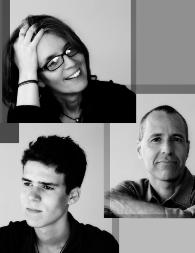

Footage of natural phenomena is used as a primer of the multilayered imagery, bringing a semi random pulse to the final Dynamic Painting videos.
Marcela and Daniel Carvalho create the imagery and José Santos composes and arranges the contemporary instrumental music that drives the dynamic visual. Their latest project, The Water project, is a collection of audiovisual works each one bringing focus to different aspects of water dynamics. Our intention is to immerse the viewer in the abstract images, creating a unique sensorial experience.
Heejoo
Altera Art Collective
My artistic practice is rooted in the observation of the construction of my identity in relation to the constantly shifting cultural and political landscape of Israel, the country in which I was born and raised. For my generation of Israelis who grew up during the late 80’s, as the country transitioned from socialism to capitalism, from zionism to post-zionism, the zionist dream was challenged and criticized, and a previously embraced dominant narrative of nationhood and cultural pride was put to question. I experienced this transition through popular media: television, movies, magazines, etc. It impacted me deeply and lead to my current critical perspective how ideological frameworks impact not only the society we live in but our very own formation as individuals. I am committed to explore at large relationships between media and ideology, to challenge dominant ideas and to better understand representation as a tool that articulates subjectivities, bodies, affects and desires. Working in video, photography, performance and installation, I use text and visual language from popular media such as YouTube, news broadcasts and TV as source materials for my work.
Michael Trozzolo
Izabela Mašić
Special thanks to: Charlotte Seegers, Martin Gantman, Krzysztof Kaczmar, Tracey Snelling, Nicolas Vionnet, Genevieve Favre Petroff, Christopher Marsh, Adam Popli, Marilyn Wylder, Marya Vyrra, Gemma Pepper, Maria Osuna, Hannah Hiaseen and Scarlett Bowman, Yelena York Tonoyan, Edgar Askelovic, Kelsey Sheaffer and Robert Gschwantner.

Lives
“Freedom Project for Art” (Curatorial: Project/Interactive/Installation)
 and works in the Region Metropolitan of Santiago, Chile
and works in the Region Metropolitan of Santiago, Chile
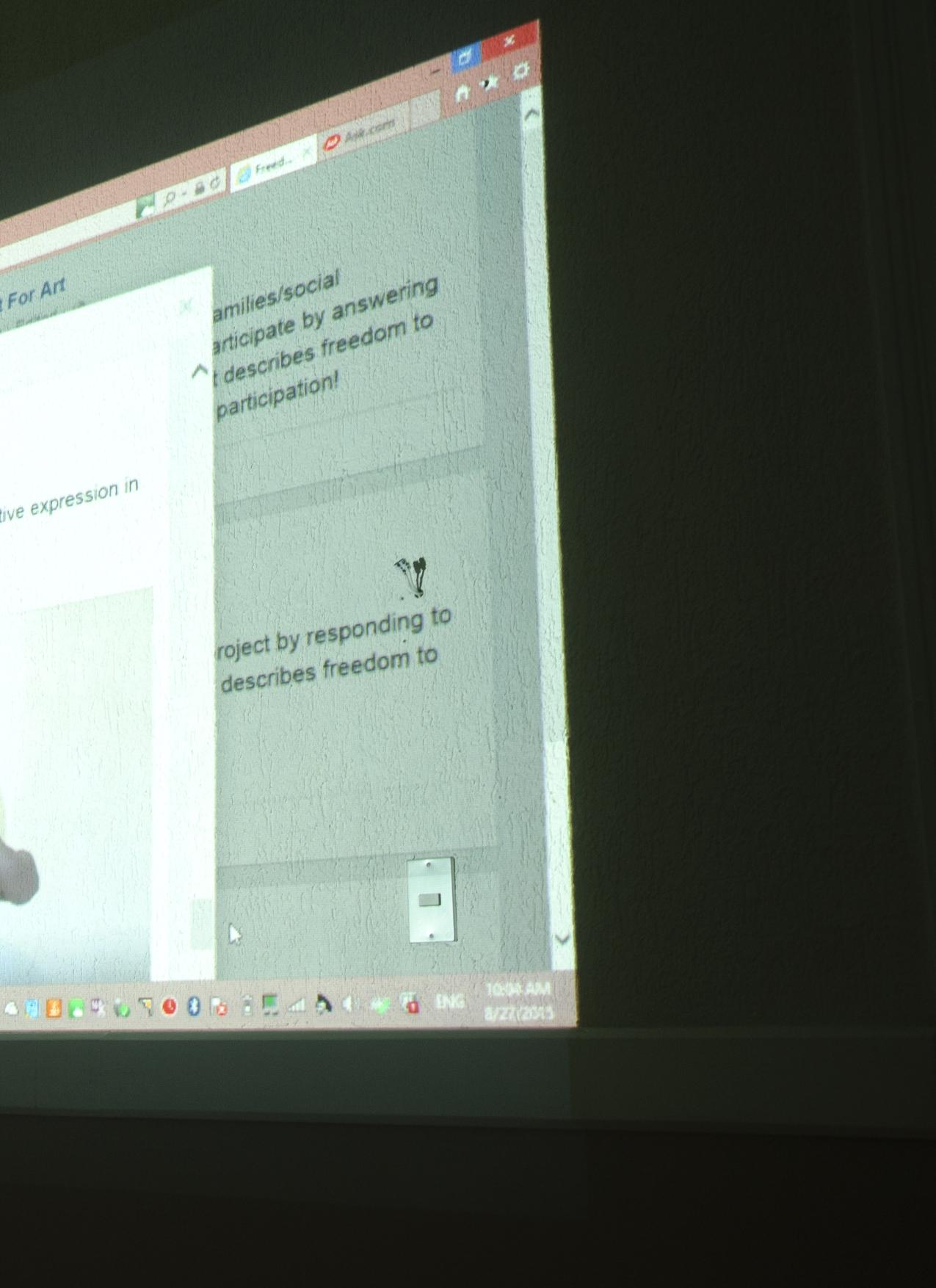
 “Cotton Candy Sofá Cama "10.5 kilos"
An interview by , curator and curator
“Cotton Candy Sofá Cama "10.5 kilos"
An interview by , curator and curator

When I look back at my time in graduate school, over a decade ago, I remember having certain perceptions of the art world and what I thought it meant to be an artist head stuck in the studio all day, excited to be working and challenging
myself (ideal job), but life is not always that straightforward. I remember the day I decided to change disciplines, I had been accepted into the ceramics program based on my portfolio and although, I was good at making vessels and clay sculptures something was missing: I wanted to cross disciplines and explore conceptual based art. It seemed to be more accessible outside the ceramics field. At the same time, my intuition of spatial reasoning and dimensional awareness was evident, I wanted to
Robert Gormanexplore this area to further develop my ideas, largely influenced by my interest in sociology.
In January of 2006 I started working on multiple projects experimenting with new materials to get my feet wet, mostly unconventional materials at first like dry hard food: chickpeas, legumes, and candies to try out some of my ideas, while continuing to explore unconventional ways to use clay and natural material to create installation pieces.
Eventually, I learned to use a MIG welder and got into fabricating metal, wood and plaster. This directional shift, really helped me develop a social vernacular within my conceptual based work as I developed my ideas, I made connections to everyday life and from those experiences: my artistic aesthetic was born.
After graduation, reality quickly settled in and I realized: as good as it was to have experienced my artistic birth one haunting question remained: How do I continue making art? Today, this question continues to influence the way I conceive and produce my work. I’m an independent artist. This is hard at times, but it also comes with benefits and freedoms that allow me to work on my own ideas, when I can and across disciplines if needed, and while I’m accustom to this lifestyle my progression as an artist happens at a slower pace. For example, I have invested about 2 years, now, developing a spatial awareness between body movement and percussive sound, using live video and collaborative performances to expand my investigatory work. I’m able to work with live video performance at a more manageable pace, when I’m juxtaposing

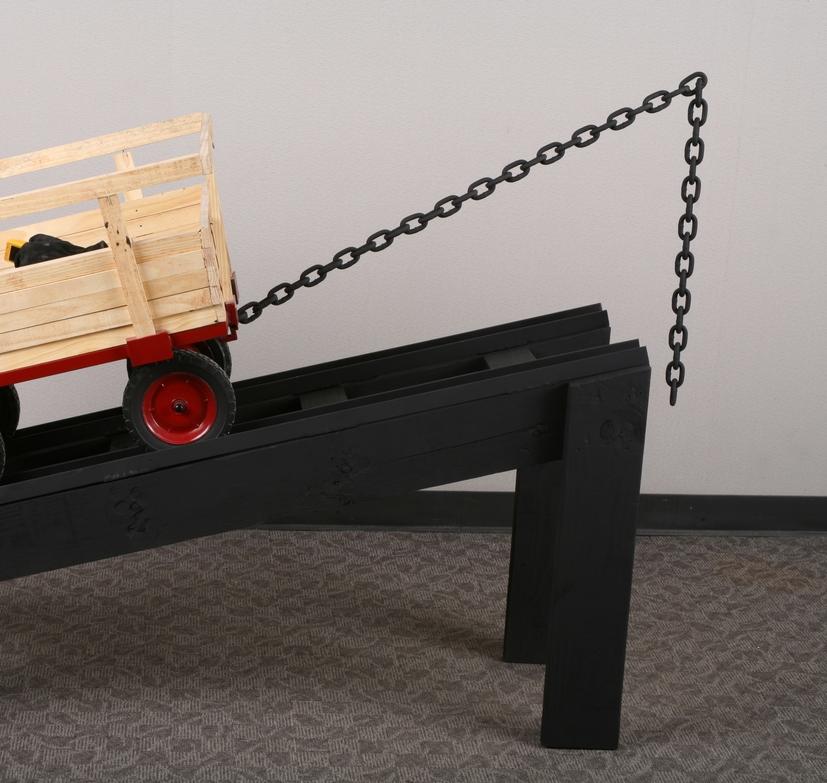

live percussive sound to pre-selected videos, meanwhile my interest to advance my investigation in the experimental video field is high, but it’s been put on hold: due to the learning curve I’m enduring to create and edit my own videos.

Alongside my live percussive sound performance with dancers, I’m also able to move forward with my investigation. One aspect, I find paramount for its advancement: is the physical space I create with the dancers—this allows me to express my intuition of spatial reasoning in a constantly changing environment, which tests my response time with percussion sounds to body movement “on the go” and helps me expand my percussive sound vocabulary: in the sense, I can match sound to an overall ambience of the environment or create a particular beat to a movement and those experiences’ then, help inform my ideas for my video work.
That’s an interesting question. I think maybe: it’s not that one medium has
Piece entitled: "COLLECTIVE PRACTICE: A Calendar of Wishes and Rituals Underscoring Contemporary Culture"
 Photo by Jacinta Izquierdo for the Collaborative group: The Bestia, formed by: Robert Gorman, Amelia Ibañez and Matilde Amigo in 2016.
Photo by Jacinta Izquierdo for the Collaborative group: The Bestia, formed by: Robert Gorman, Amelia Ibañez and Matilde Amigo in 2016.
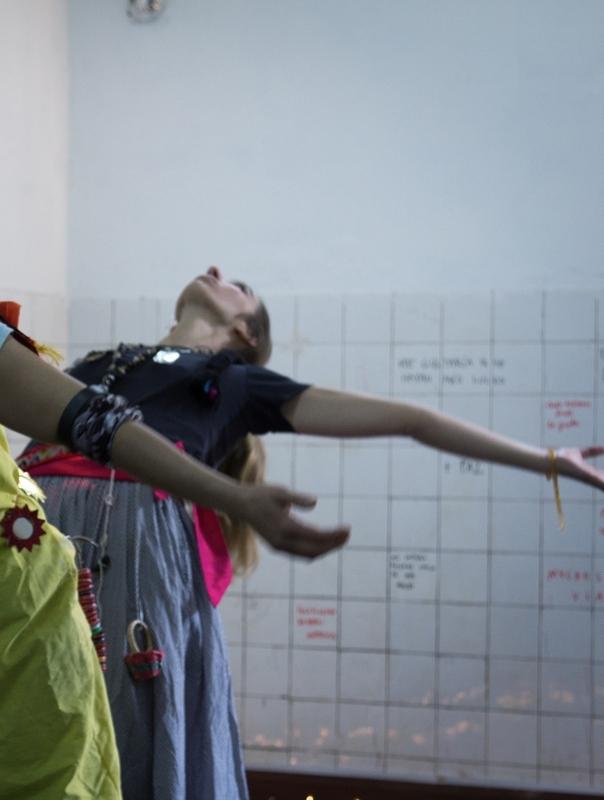

exhausted its expressive potential to self, but rather the circumstances in one’s self have changed, allowing you to look from a new lens that drives you to explore different disciplines. For instance, I haven’t touched ceramics for over 10 years, but if you offered me another chance to create a new body of work from clay, I would accept your offer to explore my conceptual ideas with a new found aesthetic that I wasn’t able to see before.
As it relates to my work, I know when I’ve become distracted beyond the normal fatigue and drain of life, I need to reevaluate where I’m heading and it might mean: I need a long break or I need to let go of the work to explore something new. I remember this happened to me before I started my photography project, I had lost interest with my Pillow Form series, while there were also a number of other factors at play to contribute to its decline, I had to stop working for a couple of years to process everything. It was a needed break. I came back refreshed with new insight and a renewed spirit for creativity and opportunity. I’ve learned that all the studio time in the world is not always what you need.
Looking back, I remember not feeling like

an artist during my late twenties: I didn’t have a studio or any new art to show. And one day, out of the blue, I was aimlessly sketching on a tiny piece of paper during my lunch break at work, and something caught my eye; it pleased me to see this random form come from my subconscious mind. That’s when I became interested in perception and how our minds’ interpret information, react and respond to new experiences.

Some of the first pillow forms I ever created came from random sketches. I was interested in taking these random sketches and turning them into 3 dimensional objects and at the time, I didn’t have a lot of resources to experiment with while it happened that one day I was thinking about my grandmother and a light turned on: I remembered I had access to sewing paraphernalia—my grandmother sewed most of her adult life and thereafter, I taught myself how to sew by hand and then by machine.
Meanwhile, I was trying to understand my own identity—as a male; specifically, as it relates to societal roles we’re often expected to follow and if not, figuring out how to deal with the social pressure of not adhering to them. Subconsciously, this came out in my random drawings. And, I realized I needed to express this artistically.
It was the right time, I had the means to develop these ideas about my own experiences with gender identity—specifically to use genitalia in a public way to express: humanness; in the way in which people see their own sexual identity. Naturally, I saw a relationship between our everyday existences’ and how sexual identities’ are perceived; our human nature seems to hide in plain sight from anything

that appears different and ignore it.
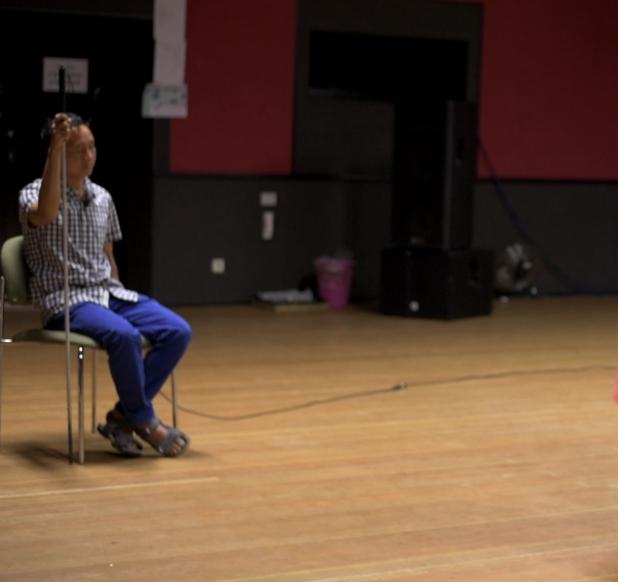
formance (“A Narrative of 3 Performers Living 3 Different Lives on Three Different Islands"),

ival 2016
In my opinion, the role of the artist in to-
day’s landscape is ambiguous, at best, and varies between the famous and unknown artists. Where I’m coming from: art’s role is to examine or question reality and allow time for contemplation to occur, reflect and ultimately, express what surfaces from my subconscious—speaks to who I am.
As far as political views are concerned, I’m not interested in making political driven art, nor do I see much value in art used to advance a particular political agenda. Nevertheless, I think socio political criticism within works of art are healthy, as they create dialogues.
For myself the importance of the spectator to visually engage my pieces’ automatically implies a shift in their perspective because each piece may look familiar at a glance or they might not recognize what they are looking at—at first, but whichever the case: when they get it, the action of rethinking has already occurred in their mind. What is of importance to me when using materials that are associated to daily life, as a way of disarming the social weight of the object: is a way to allow the subconscious thought to awaken.
For the spectator who has chosen to en-



gage my Pillow Forms, physically, the randomness in my process disappears and the details of my work start to play an important role in how a person might experience his or her own self, while holding, touching and playing with each piece. What I love about this work: is seeing a person physically embrace a piece for the first time—there can be a sense of innocence, shame or freedom when they allow themselves to finger a pillow-vagina.
I’m not particularly fond of the White Cube and what it represents. However, an artist has to use the system to his or her advantage or become an outsider. Thus said, the relationship between public sphere and the role of art in public space is important to understand, especially, when having to look for different venues to show unconventional work. For instance, I was offered a show at a contemporary library in Santiago, which had an adult section for mature materials—this worked towards my advantage in creating a solo exhibition of, overly large, Pillow Form installations’ for people to physically engage. Of course, this was of great importance to my experimental work, regarding the relationship between public space and spectator. Sometimes, you have to be patient, and not overlook your possibilities when making decisions based

upon the end result—although, I didn’t have my work in the main gallery of the library, where there would have been more visual exposure of my work, I accomplished the purpose of physical engagement.
Obviously, there is an importance for artists’ to re-contextualize the past in our contemporary age; the point is, at what age do artists’ value its importance there are many young and emerging artists trying to make names for themselves in new media art industries, which have changed traditional ideas regarding the role of art.
Thus said, the role of the artist has changed some today, I think artists have had to become a lot more “app” savvy regarding social media networking and putting yourself out there in a global market, and because the traditional gallery platform is not open to all artists’ a lot more independent art producers have to look outside the traditional art markets,



meanwhile the shift towards an interdisciplinary philosophy in the art and academic world have already occurred, so there are more opportunities for collaborating ideas in art residency programs and other opportunities for shared experiences to gain knowledge than ever before.
Temporarily, current trends in the art industries (festivals) have risen notably within the last 2 years in two different fields: performance art and film/experimental video. Moreover, the vast majority of performance art festival calls are for collaborative projects that incorporate live interdisciplinary art with new media which has given birth to a new generation of artists’ performing alone or collaboratively for a chance at notoriety. Just google: currents new media festival Santa Fe.
Likewise, the film festivals have created a short film category—this has changed the way people think about the artistic process within its discipline and as a result, it has broadened the doors to its industry, causing a massive increase of short film producers among young, emerging and established artists.
One day I found an old purse; one of my wife’s that was heading towards the trash, so I saved it and decide to see if I could create another type of soft sculp-

ture, and I did; the work is entitled: “hers untitled”. Afterwards, I realized something profound: a woman’s handbag becomes another extension to her body and with that in mind, I wanted to investigate the idea further so I went downtown and observed women and their handbags for the day—this opened my eyes to the hidden dialogue, in plain sight, emerging from the movement of women, which turned into a photo documentary project.
reception, as a way to have an open dialogue with people in general.
Well, I would hope my work has some audience reception and there are projects like my social media: Project/Interactive/Installation, mentioned above, that would definitely benefit from it more than less, however it’s hard to control whether or not people will participate in an open project, so in terms of it being a crucial component of my decision making process it’s not, but I would say: it’s important to use language as tool to address your audience, in a particular context, for the benefit of their
Your welcome it’s been my pleasure. Well, I would like to fully develop my experimental percussive sound video project; it is something that I’ve been thinking about for the past year. It combines the research of my Visual Beat Dialogue project with some of the live performance aspects of my collaborative percussive dance work: of exploring the human subconscious response to spatial awareness between the body movement and percussive sound (b m p s). At the moment, I’m looking for a fully funded residency program to develop this project. As far as my collaborative work is concerned, I’ll have to wait and see if we make the second round short list for the International Biennale for Contemporary Art of South America 2017.
Additionally, I would like to take my: b m p s investigation to the next level by choreographing some new ideas, if possible with an experimental dance company this year. And finally, I have a renewed interest to look for new public spaces to show my Pillow Form series and possibly create some new Pillow Form installations.
 “golden calf” (thesis exhibition)
“golden calf” (thesis exhibition)



Vered Snear
Vered Snear (b. Israel 1982) is an artist based in New York and Tel Aviv.
After studying Photography at Minshar for Art in Israel, Snear gained a Masters in Interdisciplinary Arts at Tel-Aviv University, Israel. In 2016, she gained a MFA Fine Art at Parsons The New School for Design, New York.
Recent group exhibitions include; I can because you do, Participant Inc, New York (2016); Parody of the work of time, Hanina Gallery, Tel Aviv, Israel (2016); Lived experience, Twelve Gates Arts, Philadelphia (2016), Universum, The International Photography Festival, Jaffa, Israel (2016), Pausing just to keep up, Sawtooth, Tasmania, Australia (2015), The Annual Exhibition of Photography Graduates, The Open Museum of Photography, Tel-Hai, Israel (2013). In 2015 and 2016 she received the Provost Scholarship from The New School New York. Snear was a 2016 NYC Art + Law Fellow, and undertook a Banff Centre Summer Studio Residency, Banff, Canada. In 2017 she will participate in the AIM Program at the Bronx Museum, NY.
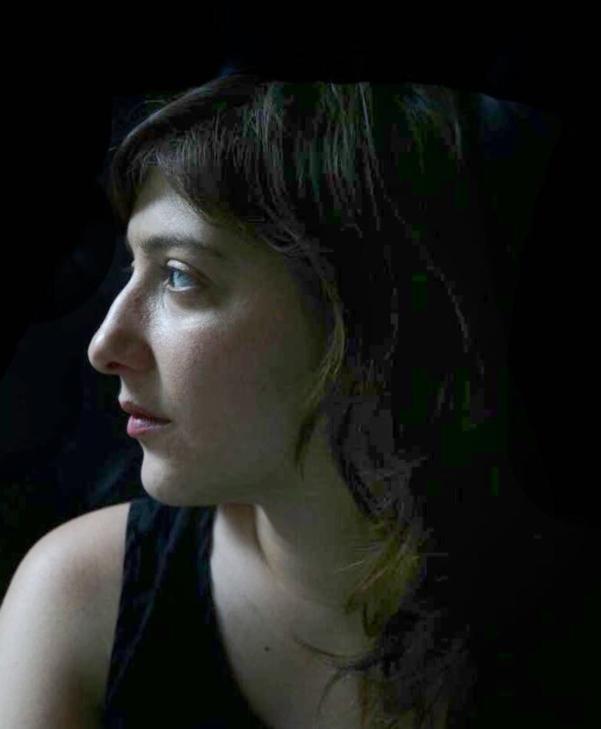
Hi ART Habens, thank you for inviting me to participate in this issue. My artistic practice is rooted in the observation of the construction of my identity in relation to the constantly shifting cultural and political landscape of Israel. For my generation of Israelis who grew up during the late 80’s, as the country transitioned from socialism to capitalism, from zionism to post-zionism, the zionist dream was challenged and criticized, and a previously embraced dominant narrative of nationhood and cultural pride was put to question. I experienced this transition through popular media: television, movies, magazines, etc. It impacted me deeply and lead to my current critical perspective how ideological frameworks impact not only the society we live in, but our very own formation as individuals.
My education has focused on gaining multiple methodologies across various disciplines such as visual studies, gender studies and political theory. Part of this rigorous process of research is a commitment to critique. I view critique as a practice that not only suspends judgment , but offers a new practice of values based on this very suspension. Therefore, critique means re-composition, re-construction, invention and the opening up of a new space. This praxis of investigation, research, experimentation and critique is not bound to a specific medium.


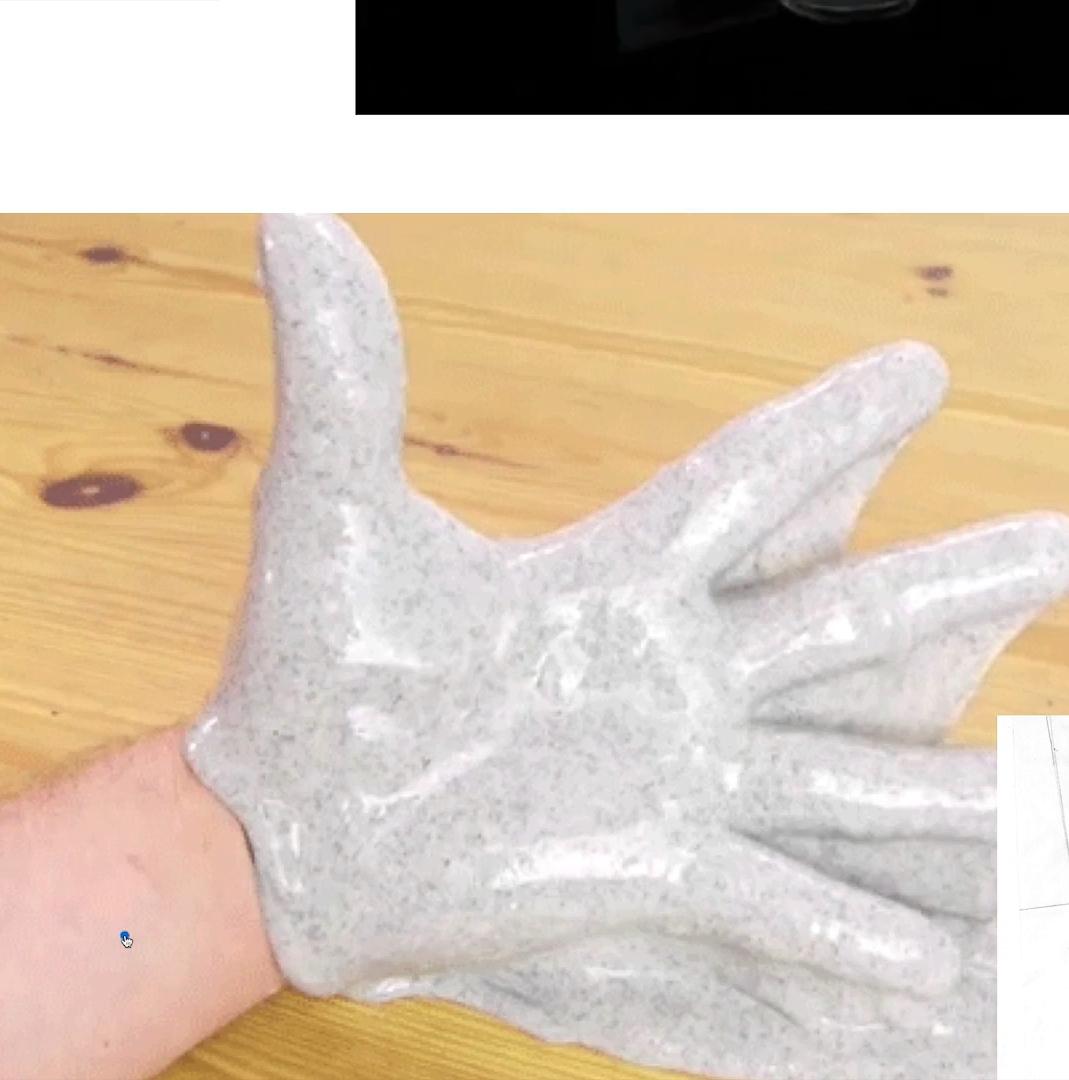
As previously mentioned, my work begins with research that is not bound to a specific medium but rather is attentive to whatever the material reveals or dictates. My ideas usually start with a curiosity about my own positionality and the ways by which it was formed. I often have a few materials I’m interested in working with, and then struggle to find the right mixture that will produce a generative friction between activity and context. Ideally, the different avenues of my research will serve as catalysts for one another, unearthing the manipulative nuances of each. Making a work is a process that is both instinctive and structured. I experiment with different medias and approaches until I find the right balance. Most of the times one work leads to another work. I use text and visual language from popular media such as social media, YouTube, and TV as source materials for my work. I feel there is potential to align my approach with the way early dadists’ photomontage and later with the Situationist movement détournement approach of the way they used magazines, the dominant form of mass communication in their era to critique mass culture. Similarly, I’m
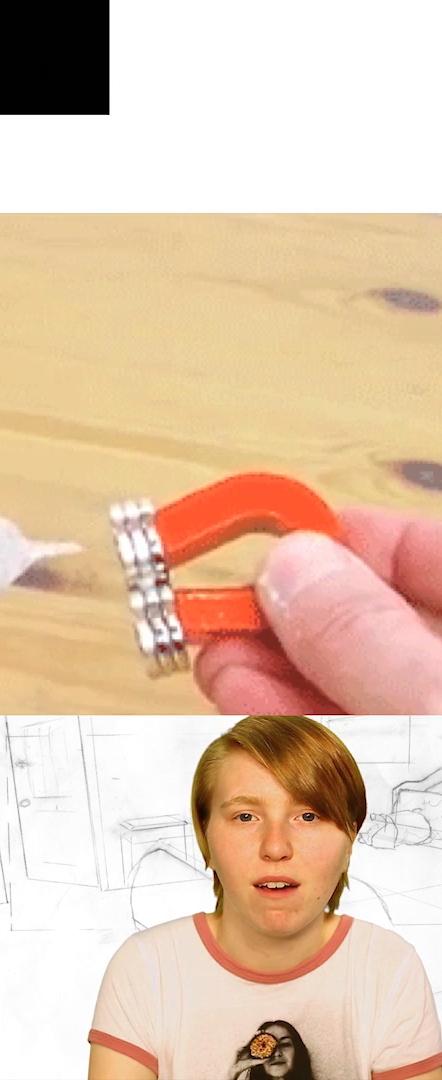
interested in dissecting and reconstituting current communication methods. Once the source material is translated into the fictionalized realm of my final work, the conventions of the source material are disrupted in order to diverge from common expectations, exploring their own language to create cracks in the ideological narrative.

Living in this day and age I feel it is important to discuss the ways the interaction with technology influences us. My Current work dives into digital platforms as a site of subjectivity and consciousness formation, shifting tradition notions of critique of social formation into the social fabrication of the digital domain.
In my work I examine how media has become so inseparable from us, that we no longer live with media, but in media. With media becoming more life-like and life rapidly adapting to the logic of media it makes it difficult to stop and identify and to think critically about how these things structure and monopolize our experience despite the misleading empowerment of “user-generated content” and “customizable” options. I am interested in

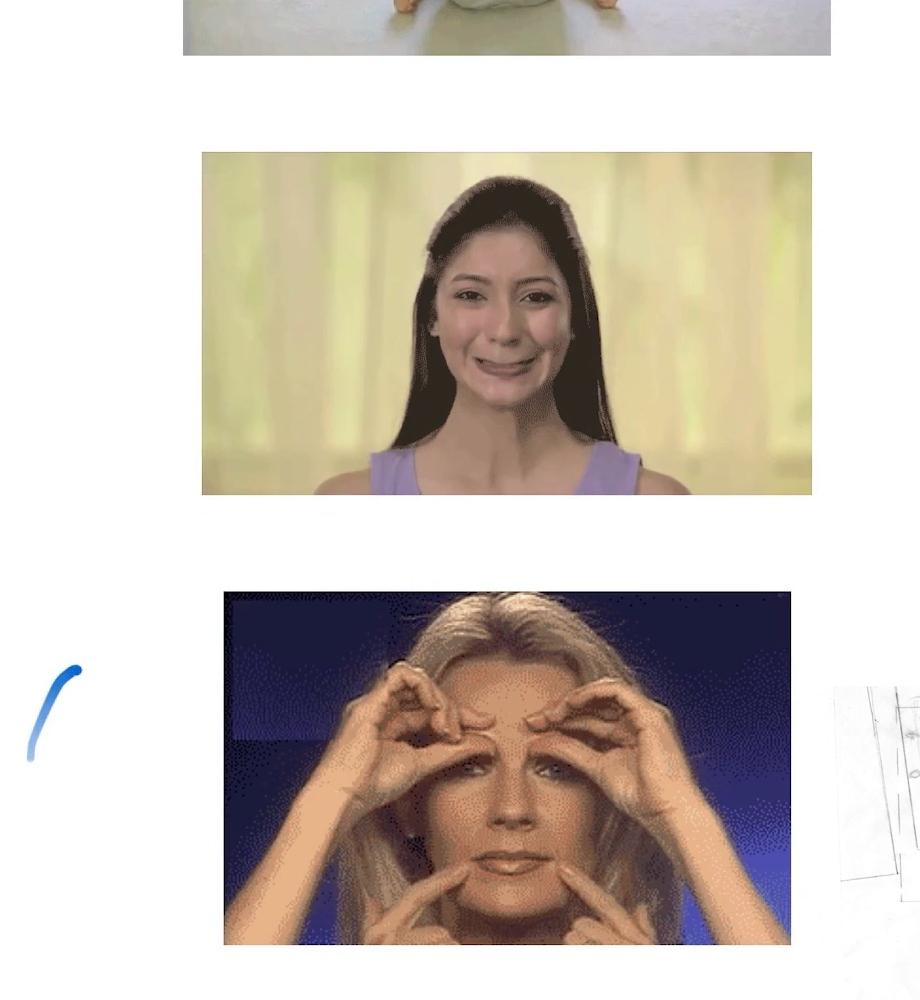
interrupting the relationship between the user and the media, seeking not only to deconstruct the formal and instrumental aspects of internet browsing but also the identities that are constructed with and within it.
I believe that the role of the artist in society is to offer a chance to reflect collectively on the imaginary and to subvert the dominant narrative. Our role as artists hasn’t changed but accomplishing it had became much more difficult as any mode of critique is automatically recuperated and neutralized by capitalism. The increasingly lifelike nature of media including the contemporary design and development of ubiquitous computing, haptic technologies (touch screens) and natural user interfaces (such as the motion sensor devices in gaming consoles), further contribute to the immediate interface of our living environments (principally, our bodies) with media technologies. This perspective starts from the realization that the world and our lived experience in it are framed by, mediated through, and made

immediate by media. I believe that digital platforms are the site of subjectivity and consciousness formation. The manner in which media has become a simultaneously invisible, pervasive, and ubiquitous presence in our lives has extensive cultural and societal repercussions. The concept of the subject is complex in critical theory, and there is a general tendency to complicate the notion of the autonomous individual capable of self-knowledge by introducing the shaping influences of discourse and ideology. Such theories commonly suggest that the subject is best understood as a compromised position formed by the outward push of an innate root persona and the inward push of more universal cultural forces. I suggest that technology must be added to the mix of decidedly exterior, cultural determinations that shape the subject. This is the reason artists should be shifting tradition notions of critique of social formation into the social fabrication of the digital domain.
The Samsa Tunnels Museum examines the way museum uses technology to appeal to the audience and question what kind of experience and knowledge is offered by this shift. The danger of the museum’s transformation is the loss of knowledge, flattening of the historical events’ complexity and most of all the
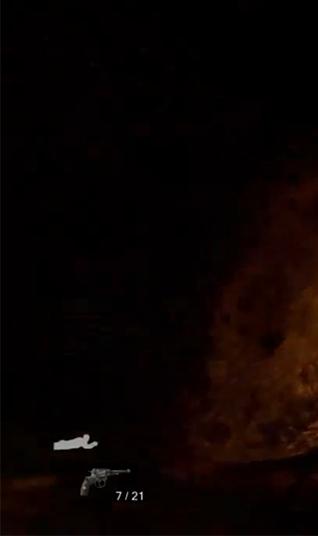
denying the opportunity for it to be a learning experience. Preventing the opportunity to relate and identify with past events and moreover, to reflect and ruminate in relation to current events. In this work I examined the collision between the violent/chaotic/horrific and leisure/tourism, investigating the role
history takes in ordering and classifying the threatening and the unstable. I was intrigued by the transformation of these sites from horror into entertainment. For example, one piece in The Samsa Tunnels Museum appropriates the video game “Tunnel Rats” as a cyber journey within the tunnels of the fictive museum.
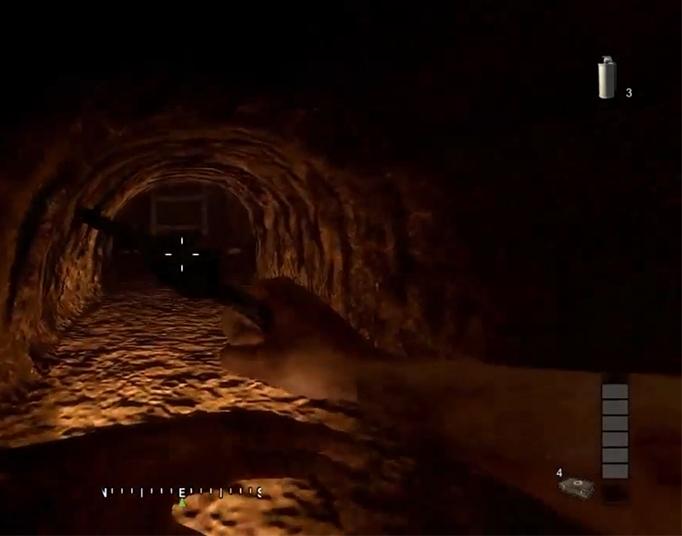
 The Samsa Tunnels Museum, Installation view, 2014-2015
The Samsa Tunnels Museum, Installation view, 2014-2015
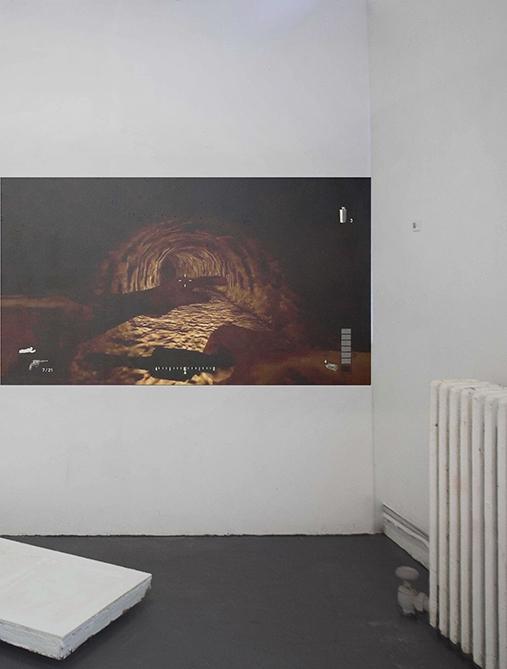
The video proposes a bodily “tunnel experience”.The script of the video is an appropriation of visitors’ brochures from the 9/11 memorial, The holocaust museum in Washington and Yad Vashem in Israel. Another piece is a plaster cast with supposedly found artifacts from the original site. This object is in flux between
artifact and display, archeological excavation and presentation. The captions suggest multiple readings to each artifact opening up the question of historicization as a process of narration.

In this work I was interested in the immersive nature of the viewing experience of art that has been co-oped
by museums. I was intrigued by unfolding the type of experience offered in a context of an historical museum or a site of trauma that was historicized. Part of my research included visiting the 9/11 memorial and the holocaust museum in Washington. In my experience, these museums make the past more approachable for the viewers to devour it happily without raising any questions. Any conflict that might have risen from these historical events is toned down so it can be easily digested by the visitors. Moreover, museums select elements of real or fantasy worlds and turn them into a hyper-reality that is fun or safely frightening to experience, thus offer the visitor an experience similar to movies or theme parks. These museums portray a History that is trying to be bigger than life, more exciting than life itself. I argue that this shift into phantasy and fiction in regards to actual historical events is a distancing mechanism that creates an unrealistic perception of history that denies the viewer to reflect on current events in relation to the past. Instead of a reflective and contemplative experience the viewer is entertained.


Bertold Brecht’s “Estrangement effect” is a helpful method to distance the viewer from the performers, while at the same time engaging them deeper as a conscious, critical observer. I aim to disturb any conventional expectations a viewer might bring to my work. In my video installation “Trauma / Drama” (2015), the usage of a low-tech green screen with a seemingly ordinary landscape, combined with the lack of makeup on the performers, points to the artificiality of the work. Physically, artificiality is experienced when the viewer approaches the work through a small passage into a dense, constructed space, creating a claustrophobic effect on the body. The language is not naturalized by the performers, which opens a gap between the delivering body and the script itself. The script is an appropriated YouTube monologue, uploaded by an Israeli girl in 2014. She portrays a traumatic, personal experience in light of the recently revealed attack tunnels dug by Palestinians. The re-preformance of her script portrays and reflects the ‘traumatized’, as if there were a traumatic registry within cultural memory to draw from. Consequently, unmasking trauma as part of an ideologically formed condition that exceeds the experience of an individual. Maria Sturken in her essay “Memory, consumerism and media: Reflections on the emergence of the field” points to a connection between personal memory and a cultural memory: “The concept of cultural memory (as opposed to collective memory) is deeply allied with
the notion of memory practices. Cultural memory as a term implies not only that memories are often produced and reproduced through cultural forms, but also the kind of circulation that exists between personal memories and cultural memories” . I find Sturken’s term ‘cultural memory’ very helpful in understanding the circulation between private and public experience of an event. If one perceives a cultural memory as personal, one might overlook the ideology and narrative that is concealed within.
The performance in the video is used to merge reality with fiction, to create a deeper understanding of the popular media’s role in creating imagined subjectivities and communities. I believe this resonates with Demand’s idea of the psychological narrative within the medium.
I think that the role of art is to generate an inclusive public space that encourages complex diversity of ideas and forms that are otherwise difficult to experience, address or discuss. As a collective social space, it offers a possibility for these ideas to re-insert themselves into parts of
a public consciousness. Art is a collective space, even if the viewing of the work does not necessarily happen collectively. The idea of the shared experience remains with artworks and thus framed as a political site. Art has the potential to helps us recognize the boundaries of our own comprehension, not as a threat but as potential.
Life Hack approaches the Situationist movement concept Détournement with a contemporary understanding of this concept - As hacking. Performing a hack promises a degree of agency in understanding and manipulating the object of desire. The term itself has extended beyond its typical connotations of invading and manipulating computer systems, and has spilled over into everyday life. The prevalence of “life hack” articles that promise to give users the inside-scoop on how to streamline inconveniences in their lives, the rise of augmented reality, and technological implants all point to an existence in which the contours of humanity are constantly mutable. What underlies these various forms of hacking is a recognition of an abstracted subject/object that can be reconstituted/redefined and holds the potential to create a space of agency that will disrupt or open-up these processes/relationships. I produced these handmade bronze sculptures while at residency at Banff Cetnre in Canada, I was privlaged to gain access to a bronze


Life hack #2, 2x4'', Bronze and metal, 2016


Life hack #3, 3x3, Bronze and metal, 2016

foundry and to learn how to create these sculptures.
Thank you, it was a pleasure sharing my work and thoughts with you. I am currently developing a work for the Bronx Museum that examines the possibilities of hacking as a tool to generate methodologies for conceptualizing, understanding, and interacting with complex systems that constitute our lives, like gender, race and culture. Through the work these allegedly-fixed systems are being rendered as alreadybreakable. The work is an augmented reality walking/navigation app that utilizes existing technologies in order to create an alternative to dominant and commercial apps. It also questions the social construction of the predetermined relationship between the female body and technology and aims to provide an agency for the historical usage of disembodied female voice in computerized systems. This piece repurposes existing technologies as a Xenofeminist social critique, as counterhegemonic intervention whose objective is to occupy the public space in order to disrupt the sleek images spread by corporations.
An interview by , curator and curator


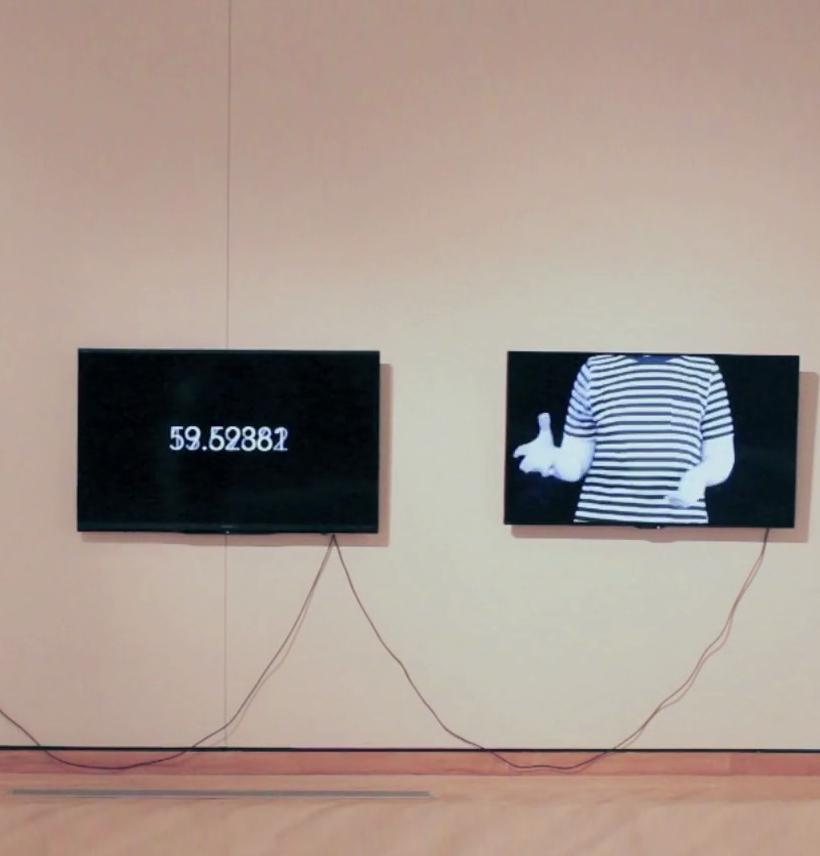
 An interview by , curator and curator
An interview by , curator and curator
Thank you for this opportunity, I’m excited to talk with you about my practice! My background is craft-based;
I’m primarily trained as a glassblower. I branched out into fiber and installation near the end of my undergraduate career, which really changed the direction of my work. Craft is primarily concerned with technique, design, and function and I became increasingly frustrated by those constrictions. This led me to sculpture (particularly fiberbased) and installation, as I previously
 Loraine Lynn
Loraine Lynn
mentioned. Graduate school really allowed me to explore working conceptually and spatially in ways I only toyed around with earlier in my artistic career. Much of my work asks a question or poses a challenge, which is derived from my desire to look past the surface and get at something deeper. Of course my cultural foundation informs the way I approach artistic production, there’s no way to absolutely separate from it. I try not to have it be the subject matter of my work, but it’s the place from which I experience the world.
Throughout my life the typical experience of art and art making has come from a superficial place: if it’s beautiful or useful it has value. I came to understand that this is a common way that art is experienced by people in everyday life. This routine way of thinking about art frustrated me. I figured there had to be more to it than just what’s on the surface, much like I am aware that there’s a world outside of my immediate personal and cultural bubble. I suppose a sense of frustration when it comes to different practices and institutions has been a motivating factor throughout much of my artistic career.


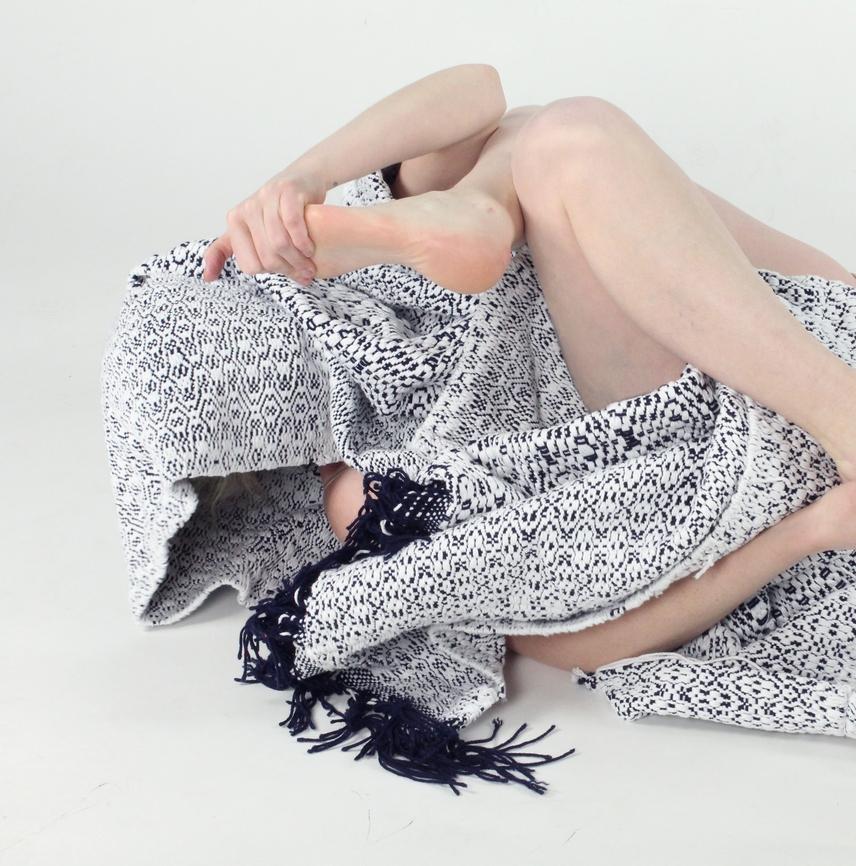
Yes, I think so. I started in a discipline that traditionally adheres to concentrating on one thing and mastering it. Many of the ideas and issues I am interested in questioning require different approaches and materials to get my idea across. Materials and methods in and of themselves are rich in concept and to be limited in that sense is stifling. I do admire those who choose one material or method and stick with it until perfection, but that also comes at the cost of experimentation and also creates a fear of failure. I find that within failure there can be a chance for unearthing new ways of thinking and doing. To be multidisciplinary requires a fearlessness or sense of curiosity that can be difficult to readily accept, though I do find it necessary to convey and explore the ideas I’m interested in.
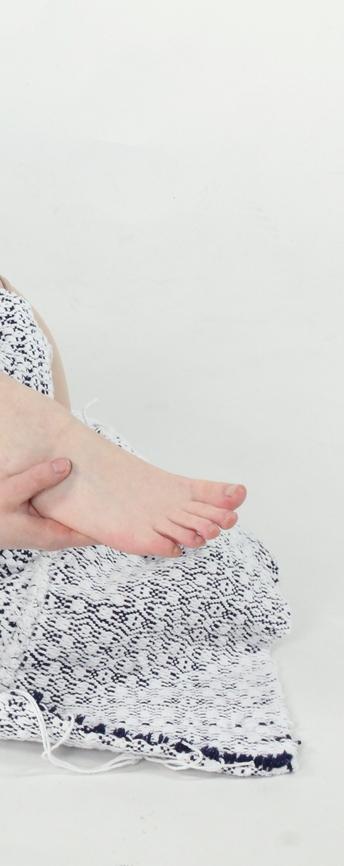
Those works were born from frustration with a feeling that I was limited to one certain material and discipline. I was experimenting with material relations and interactions in order to conceptually break away from, what I saw at the time, as a claustrophobic push to stay “loyal” to craft. I was working three-dimensionally, but issues of space and the body never once came up and that became a problem for me; it’s what led me to initially explore installation and mixed media.
Connection, in particular, was conceived when I started considering the fluidity and movement of glass as a material. I had a budding interest in fiber and tried to connect the two because of their inherent similarities, but also their differences. The material qualities were the driving concept behind that work.
String Theory was one of my first attempts at installation. The concept of
personal space, control of the body within a space, and how the body navigates a space led to the creation of this piece. It was a step away from vessel making, which is what I did for many years. Looking back it seems like a natural progression since the body is often considered a vessel. Both of these works came from a subtle connecting of dots, so they are very much intuitively created works. I would say they are more on the gestural side rather than a methodically planned work. I try to strike a balance between control and intuition within my work.
I consider the immersive nature of the viewing experience extremely important. I believe that the audience should be as engaged and invested in the work as the maker. I am very interested in - and have yet to dive into fully - social practice and performance art, which make certain demands of the audience. Works that fall into those genres put the viewer in a very different position, a potentially uncomfortable one, than the traditional experience of viewing art. This has the potential to be more meaningful and powerful as it goes beyond the purely visual and aesthetic.

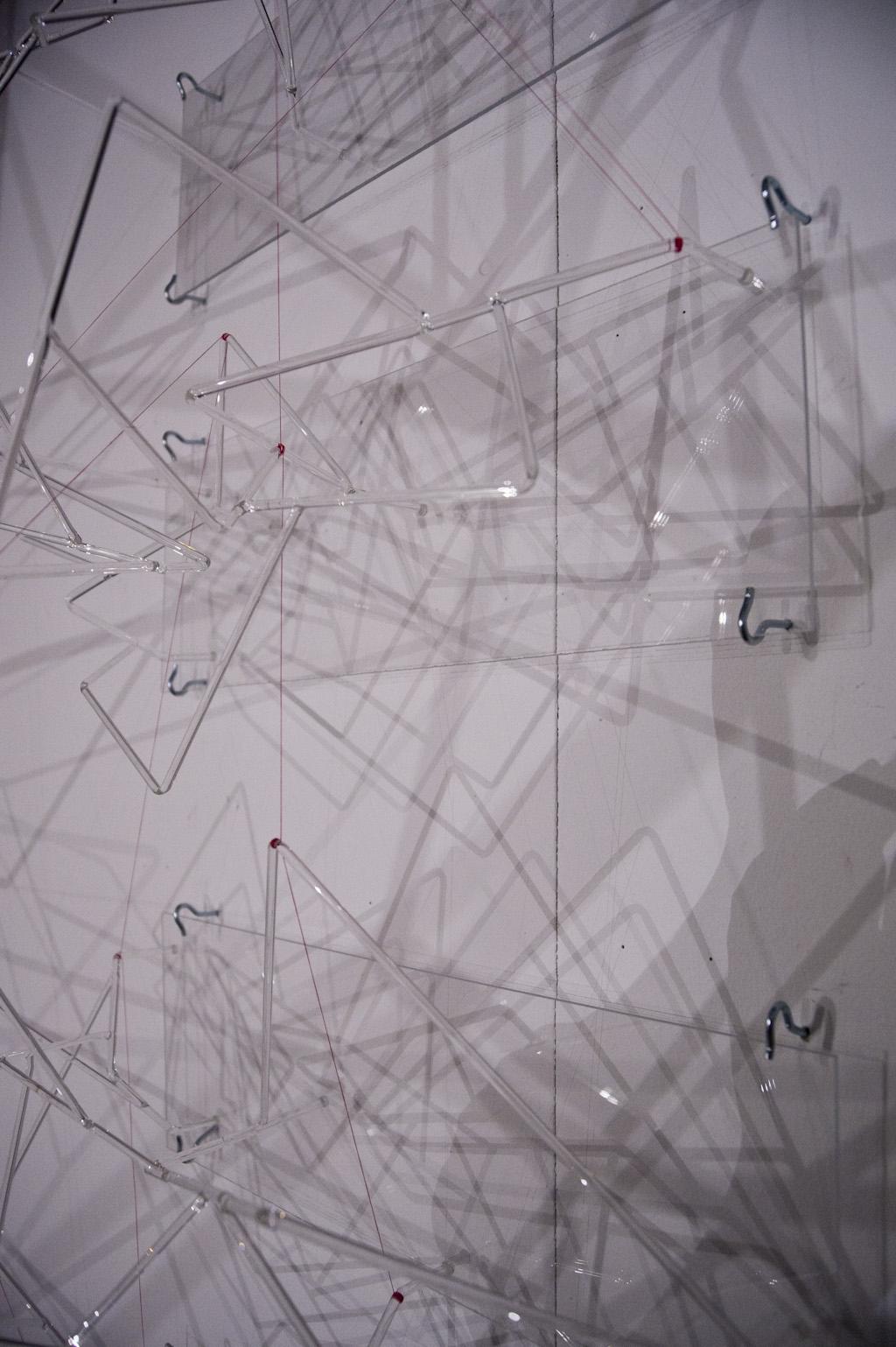
Art can occupy many different spaces, which makes it a powerful tool. Art in public space can have a variety of effects, from simple aesthetics to political; the performative nature of art in public space (and in general) is something that interests me. Digital technology have given us a whole new public space to explore art as well, which lies outside of institutional systems, such as galleries and museums. Ideas of public and art are always shifting, which is an exciting prospect because it allows for a wider dissemination of artistic production than ever before.
think this sort of practice speaks to what Bulloch was proposing. This sort of action highlights the power of the artist to enable dialogue, change, and put forth challenges to the problematic structures that we constantly navigate.
To answer your second question: yes! The role of the artist has changed and will continue to change. We could consider ourselves apart of a global community now since the advent of social media and the internet. This gives access to various types of knowledge, people, and places. There’s no reason for cultural or social isolation with our access to technology.
The role of the artist should be one of questioning and even carry with it a responsibility to challenge problematic structures, even if it’s uncomfortable. I have this idea that the artist should be able to transcend aesthetics, but I also understand that this type of work typically doesn’t sell and people love simple, beautiful things, you know? You have to make a living somehow, right!
I definitely agree with Bulloch’s statement. A work of art is always changing, even when it’s considered “finished.” Interpretation and context will always continue to transform art objects. Take for example American artist Fred Wilson’s artistic museum interventions. Wilson creates powerful juxtapositions and new meaning by simply pairing art objects that would typically never be placed together. I
The role of art in the contemporary age is definitely political, or has the potential to be an agent of political change. I’ve come across this issue of people believing that art doesn’t have the capacity to change anything and that boggles my mind. If you have a platform to initiate change or pose a challenge to existing structures and current issues, I believe the artist has a responsibility to do that. As artists, we have a unique ability and opportunity to breach boundaries and take on differing roles simultaneously, which is ideal for being an instigator of change. This is easier said than done, I suppose.
“The personal is political” is a slogan that comes into my mind often. My being a woman does add some additional meaning to my artistic production. I have certain advantages being white, but I’m not oblivious to the hurdles I’ve had to face as a woman, especially in a male-driven discipline such as glass blowing. Even though I draw from experiences I’ve had, I do recognize that I have to stand back from typical white feminist concerns and see the bigger picture. This is why I try to question more universal constructs and structures, such as capitalism and the idea of mastery, instead of focusing on what just directly affects me.

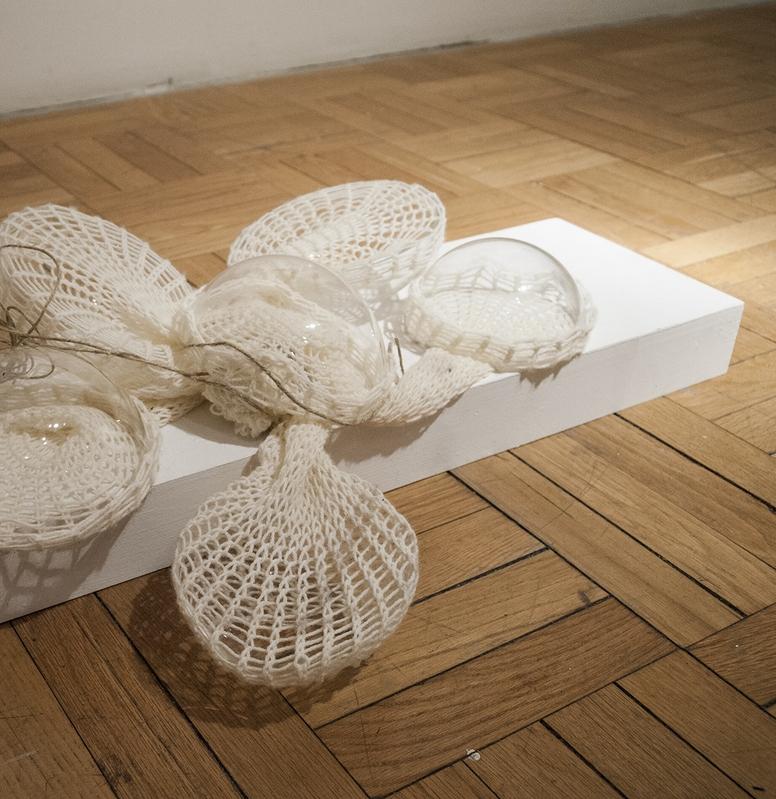
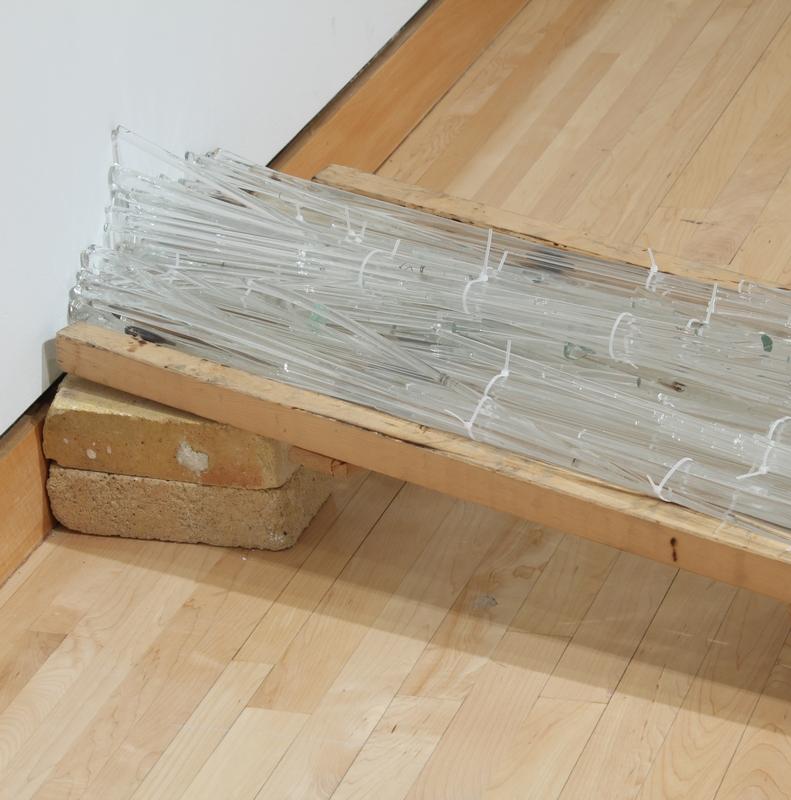
The role of the viewer is something I think about often, along with the role of the artist. I believe that the audience shouldn’t be passive in their experience when it comes to engaging with art. I know this can be difficult to achieve when it comes to traditional artistic production, but it should be kept in mind that the audience is having an interaction with every work of art they encounter.
I am interested in engaging and potentially immersing the viewer in a work of art, whether it’s physically, emotionally, or mentally. My main goal when creating work is to ask a particular question or put forth a critique and hope that the viewer leaves the work thinking about that subject in a new, perhaps critical way.

Personal interpretation and evoking an emotional response are starting points, ways of getting people to engage with concepts that go beyond their immediate personal realm. Hopefully this helps to get at larger issues that have a wide-reaching effect. My desire is to get the audience to consider contemporary issues beyond what affects them directly.
I like to work with concepts and objects that have universal meanings in order to make the work accessible to a wider audience, to give it a more “open” read. By framing and presenting actions and objects in an unfamiliar manner the viewer will read them differently - sometimes that happens to evoke a deeply personal interpretation. Repetition, for example, is a very basic part of our daily lives, but at the same time can hold a deeper meaning for certain individuals. Its scope can be both wide (in relation to cultural and political readings) and narrow (in relation to personal narrative or experience), which is why I chose to

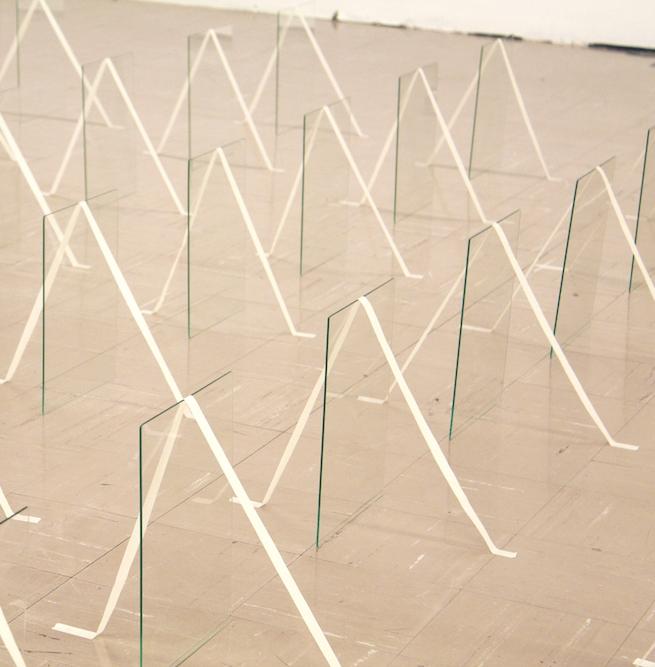

implement it as a method within my artistic practice.
The language I typically use can be a bit alienating, so I try to keep things relatively simple in my work. As I said before, I am critical within my work, challenging and putting forth critiques of structures that are riddled with problematics that are often ignored. This isn’t the most inviting or appealing concept to those who are used to the experience of art being purely aesthetic. A positive reception from the audience isn’t necessarily a goal when it comes to my work, but rather getting the viewer to a place of unfamiliarity so that they can come to a new conclusion - good or bad - that affects the way they view certain subjects. In short, I do think about the way I frame an idea or phrase words as to not create too much of a niche when it

comes to my work. Whether I’m successful in that regard is still up in the air!
Thank you so much! I’ve enjoyed spending time speaking with you and answering your thoughtful questions! As for future projects, I’m finding myself dabbling more with 3D animation and video work lately. I’m hoping to incorporate these aspects into more immersive installation works. I’ve also been expanding my practice in terms of writing: reviewing local and regional art exhibitions and working on a manifesto of sorts that grapples with issues within craft-based practices.
I envision my artistic productions becoming more participatory as I continue to work. I am rather mutable within my practice, so I can’t say for sure exactly what shape it will take, but I can say that it’ll be an interesting journey. Thank you again for having me!


Lives and works in Westfield, New Jersey, USA



Michael Endy
I am an exhibiting fne art photographer, a non-proft arts group administrator, and a branding consultant. I studied photography & graphic design at Pratt Institute, and now live in Westfeld with my family.

2016 EXHIBITS Pearl Street Gallery - Elizabeth, NJ: Lost Highway International Group Exhibits Grifn Museum of Photography - Winchester, MA: Photobook 2015, curated by Paula Tognarelli & Karen Davis National Group Exhibits
Long Beach Island Foundation - Loveladies, NJ: Works on Paper 2016, curated by Carter E. Foster Regional Group Exhibits George Segal Gallery - MSU: Montclair, NJ: Art Connections, curated by Willie Cole Belmar Arts CouncilBelmar, NJ: The Great American Landscape, curated by Stacy Smith & Ellen Martin CityLife Gallery - Jersey City, NJ: Indefnitely Wild, curated by Kerry Kolenut Overlook Auxilliary Gallery - Summit, NJ: The Healing Power of Nature Kean University/Freeholders Gallery - Union & Elizabeth, NJ: National Arts Program, Union County Exhibition Gallery U - Westfeld, NJ: Signs, curated by Deneise Hyatt-Murad Village West Gallery - Jersey City, NJ: Curators Choice, selected by Margaret O’Reilly, curated by Katie Murdock Panepinto Galleries - Jersey City, NJ: Solstice Salon Watchung Arts CenterJersey City, NJ: Nature, juried by Jeanne Brasile I am an exhibiting fne art photographer, a non-proft arts group administrator, and a branding consultant. I studied photography & graphic design at Pratt Institute, and now live in Westfeld with my family.
I see my studies as a work in progress, actually. But to answer your question, I think of my education as a foundation. And though it was analog, that doesn't
Patio Set for a Nuclear Family

keep it from applying in a digital world; it's still a world of ideas. A working knowledge of art history &
processes along with a desire to surround myself with other artists of different disciplines are both
My aesthetic drivers are largely environmental, but my approach is influenced by an awareness of art

byproducts of the college experience that inform my efforts today.ART Habens Michael Endy Mary from Asbury Park
history & culture. I doubt I would be working with a 14th C. triptych format had I not studied early European religious painting, but my palette is rooted squarely in the colors of aging Instamatic prints from the 1970s and my workflow utilizes digital technology.
I always take the long way home. I keep my eyes open, and at some

point later on it will come to me; I will know what it is that I want to revisit with my camera. I have a strong visual memory, and decide in advance what time of day and under what weather & lighting conditions I want to capture an image. They are fully resolved in my mind long before they are captured with the camera, so the act of photographing is very quick.
The process also dictates which camera I will use when I do make the photograph. I have learned from experience that large, professional cameras and equipment can make people uncomfortable, so sometimes I find it advantageous to use my more inconspicuous iPhone. And because I am working from visual memory, I want my lens to be as similar to the human eye as possible. A 50mm lens is my preference.

Conversely, my approach to combining images into triptychs varies; I'd like to say it is planned, but sometimes I stumble upon it. Other times the combination is preordained. Shooting digital means that I no longer use contact sheets and grease pencils to edit. I make up for that with lots of tiny prints on cheap paper, which I cut out and scatter around on the floor. It's a messy process: I spend a lot of time on my
hands & knees and I make lots of little maquettes. Some combinations come more easily than others, but anything too obvious goes right in the trash.

New Jersey has been my home for nearly twenty years, so I'm
beginning to know it pretty well. Familiarity either breeds complacency or sharpens the intuitions, and I lean towards the latter. I find inspiration in the enduring symbolism evident in the otherwise vernacular objects of a recent past that somehow still endures. I am intrigued by photographers who repeatedly explore their banal surroundings objectively, like William Eggleston, as

emotional templates, like Todd Hido, or trace time, like William Christenberry. Some objects project meaning instantly while others are much more subtle. Pink flamingos are not subtle. Come to think of it, much of New Jersey is not subtle.
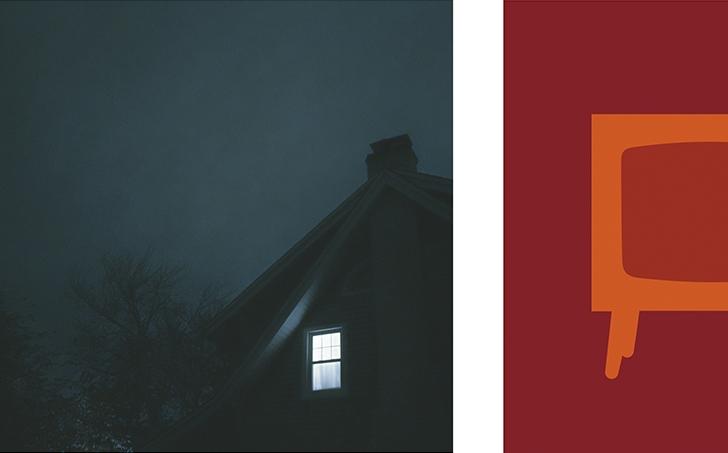
My selection process comes from repetition: the more times I see a particular object in its native environment, the more perceptual
meaning it takes on. However, occasionally the projected meaning only comes fully to life when I see the object in a new environment; it doesn't fit, it makes me uncomfortable. Now I know it has meaning – and a strong personality.
I tend to work in extended series, where each image is one element of a larger collection – or idea – as opposed to a stand-alone work. I consider presentation early in the process, and pressure test it in peer critiques.
Because these are multi-part series, the experience can be immersive. A single idea can permeate a gallery space, with each image adding to the whole, or be experienced in book form, where the progression of images is clearly defined. Either way, the goal is an immersive experience with the theme, and I am thinking about that experience as I work. This approach likely derives at least in part in part from my boyhood

Long Odds
fascination with Andrew Wyeth, whose monographs we had at home. His repeated focus on two distinct landscapes and their inhabitants (the Kuerners of Chadds Ford, Pennsylvania, and the Olsons of Cushing, Maine), year after year, set the tone for my own repetitive studies of place.
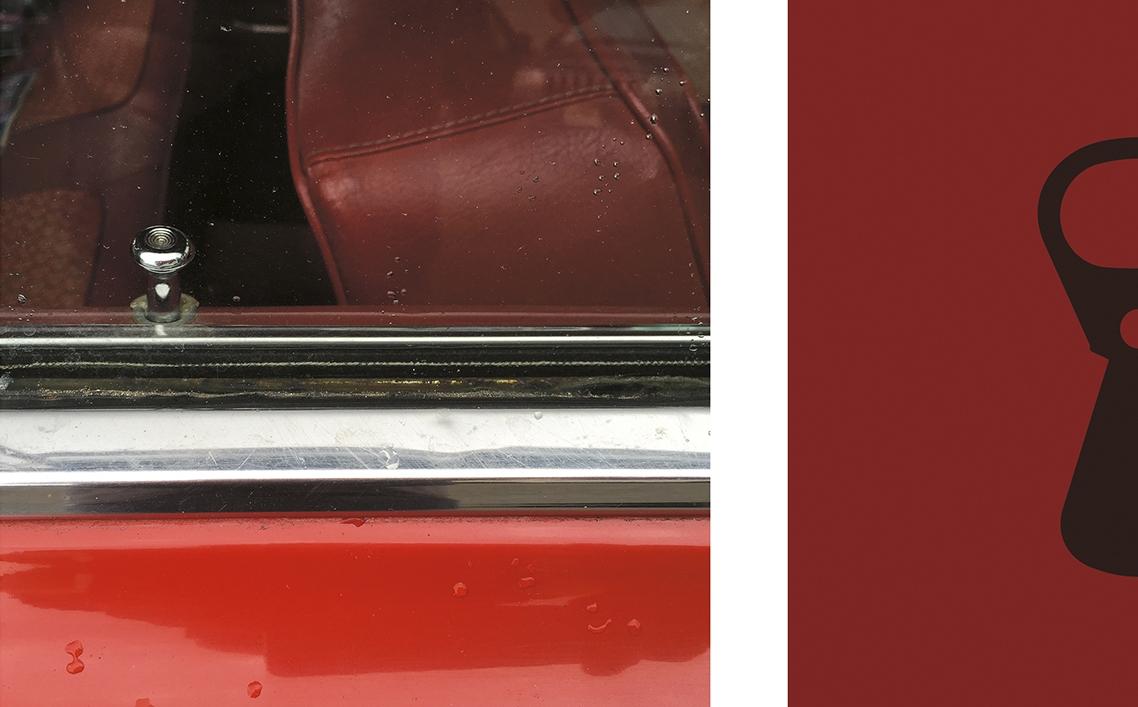
The environment is the constant in this work. New Jersey is always the main character – sometimes the hero, occasionally the villain.
I see my image choices as what writer Philip Gefter refers to as "revelations about the ordinary." However, because I am working with multiple images in these triptychs, I
get to mix things up. I prefer to tell partial stories with non-linear plot lines. I like to juxtapose visual elements to create or warp meaning, and leave it open to interpretation. My approach is more David Lynch than Masaccio. There is no conclusion, but there is a feeling, a sense of place. I am exploring a landscape that we all have preconceived notions about, and am aware that because I am using

images of real objects, any viewer will bring their own past emotional experiences to their understanding of the artwork. That's both the burden of representational art and what makes it so much fun.
In the end, it's all suburban New Jersey, or maybe America; a cultural landscape. I set the stage for each piece with the title, but after that the viewer is on their own.
In my lifetime, photography has always been a part of contemporary art, but it is definitely now going

through a growth spurt in museum collections. I see it as just another choice of artistic medium. I like Todd Hido's approach, "I photograph like a documentarian, but I print like a painter." Interestingly, this year's Whitney Biennial has at least two paintings (by Dana Shutz & Henry Taylor) based on notorious photographs – showing the power of photographic images to move beyond the medium and still incite
passionate responses. Exceptional images are medium-agnostic. Image is everything.
I don't see digital technology as informing my process so much as

making it cleaner and a lot faster. And easier, probably. My process is now digital from start to finish, but I'm not thinking differently because of that; all the steps are still there, and the vision is the same. Technology has definitely expanded my possibilities, though, and made me self-sufficient. The roots of the discipline of photography, however,
remain unchanged. The really great photographs are just as elusive.

This is a subject much on our minds in 2017. "You can feel it in the air we
breathe,”writes Whitney curator Mia Locks of the anxieties of our current political & cultural landscape. How artists react to the current mood is personal. I do not take the position that reactionary art is obligatory, but I do think it is inescapable if we are aware. And it does not have to be loud. I think Jersey Requiem, in its own way, offers a point of view on Make America Great Again.
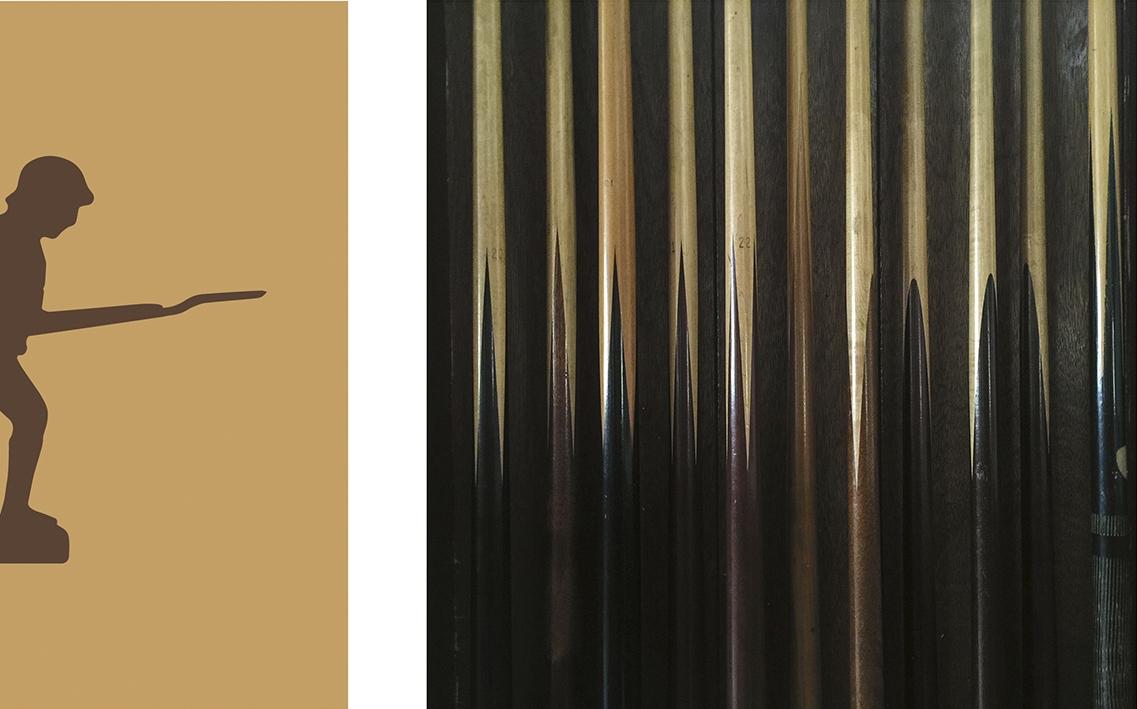
Jersey Requiem is about experience, both personal & physical. Something
important that we have yet to discuss – and that is exclusive to photography – is that the artist needs to be in the woods in order to photograph the woods. You have no choice but to experience what you photograph. How you photograph it depends on why you are photographing it. And that is informed by personal experience and

the nature of the story you want to tell.

But I think your question was more broadly about whether personal experience drives creativity. No, I don't think it is mandatory. Andy Warhol made a game of removing personal experience from art. And Jeff Koons is likely working outside of personal experience territory as well.
So no, I do not think it is indispensible for all artists.
Not really. Critiques or salons are important while I am working on a
project. Peer review, if nothing else, provides a sense of whether I am getting my idea across. And I seek portfolio reviews with curators once a project is really coming together. But peers & curators are not the same as audience.

Currently, my main focus is a series that I call The Jersey Marys. This is a typological series of photographs of aging front yard shrines to the Virgin Mary, and in that regard it owes much to the Bechers and so to Rineke Dijkstra, whose work I adore. The Jersey Marys is not so much a departure from Jersey Requiem as it

is a deeper study of a single cultural icon within that much larger story.
I have enjoyed our conversation as well. You have asked many challenging questions and made me think deeply about my art. It has been a pleasure. Thank you very much.
Captions 1


Captions 2

WOULD YOU LIKE THAT HERE WE PUBLISH A PHOTO OF YOU?
I was born and grew up in South Korea, and started painting and drawing at 7 years old. I went to an Art junior high school and high school in which students experienced various aspects of traditional fine arts practice, art history,
and theory. In order to get into those schools, we needed to get trained for still life observation pencil drawing and watercolor painting tests. Those were intense, uniformed, and offered no freedom to express our thoughts and feelings, but they were hyper realistic. The university entrance exam was the same system, we had to draw Greek statues with pencils and still life watercolor paintings in a couple hours. I was frustrated with the lack of freedom in the entrance exam structure. I wanted to be out of Korea since I was little, and my parents wouldn’t let me to go in my young age. I had to wait until I graduated University before I left Korea. After I finished my first BFA, I was tired of the politics in art society in Korea, and started wondering about what my passion was. I was juggling between medical school and MFA degree. When I came to the USA for learning English, I visited School of the Art Institute of Chicago, and I was fascinated by new media arts field and their progressive approach to various mediums. I picked MFA degree over medical school. Since I only had a traditional fine arts background, I had to transfer to an undergraduate program, and I started to learn new media fields, such as film, video, animation, and programming. At the beginning, I focused on film and video art. Then I was gradually filled with nostalgia for traditional mediums. Later on, I ended up getting one more MFA for integration of new and traditional media, updating new technologies, computer animation, and interactivity.
My experimental time based works are heavily rooted in traditional fine arts.
Captions 3
Mainly I combined 2D and 3D computer animation. I treated 2D animation as progressive drawings and 3D animation as virtual installation. I considered and used computer software tools the same as pencil or sculpture. Most of the time, computerized images don’t contain the

value of physicality in traditional medium, but I cherished different aspects of what computers can deliver. Mixing those two worlds is strange, but enticing. Unacquainted, but enlightened. Utilizing both mediums, I have more privilege to deliberate aesthetically and
conceptually. Often I feel my works are stuck in between traditional arts and film. Gallery space and theatre. The main reason I decided to stay in the United States was that I didn’t want to deal with the heavy male dominant culture in Korean society. Growing up in Korea, day

Captions 4
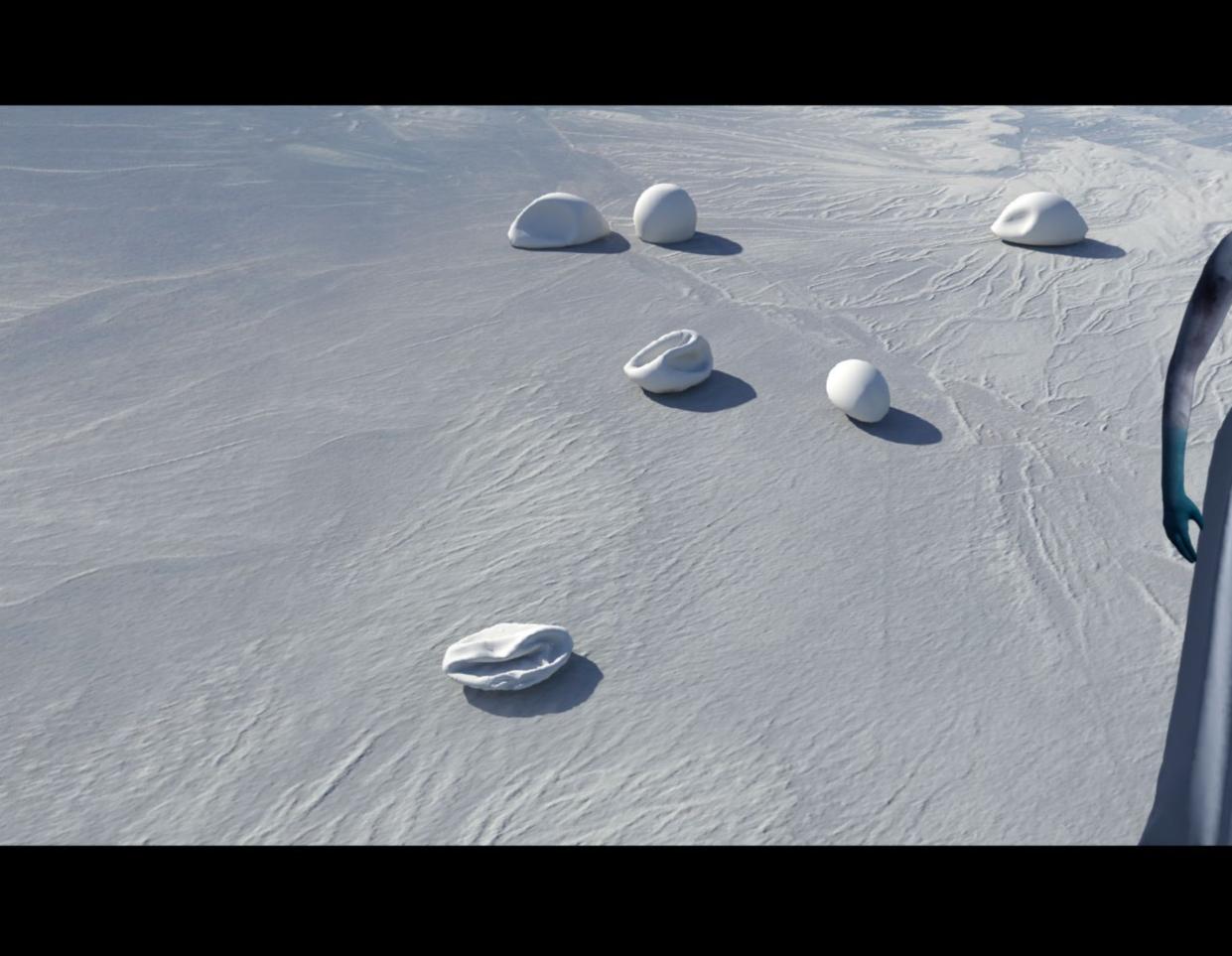
to day life, I had to experience and struggle with discrimination of gender. Boys always got better things, and girls are supposed to be secondary status or play supporting roles. It was obvious that I had to face the glass ceiling as a female in society, and just quietly accepted it.
On the contrary, in the United States, I had to deal with racism and the language barrier. I choose to be a foreigner in the US over being female in Korea. I choose racism over sexism. It was unfamiliar, interesting, sometimes frustrating experience being a female
asian with imperfect English in the United States. Conceptually, I used to work based on memory, psychology, and disorders. Over time, I gradually developed the concept based on my experience in social and cultural settings. Since my works are in experimental
forms, it is not directly described but expressed abstractly.
It didn't have to be a multidisciplinary approach. It was just my way of surviving in life. As a single mother artist, I had to balance the reality and my creative pursuit. I started with new media interactive installation involved with materials, moving images, and interactivity. I was confronted with the critical difficulty of time and physical limitation. I had to overcome my creative crisis. I had to find the way that I could manage my son while being productive simultaneously. I decided to explore more with 3D animation at that time, because this was the way I could do multiple things in virtual space without physical movement. I choose a virtual domain for my alternative solution. It gave me more creative freedom to keep moving forward.

Conceptually, this project is inspired by the works of fashion designer, Alexander McQueen and Iris Van Herpen. The intention of empowering women wearing McQueen’s garments and Herpen’s expression of identity combined with desire, moods and cultural setting stimulated the concept of this film. It explores sculpt abstract surfaces, visualizing unseen relationships: between the skin and garments, and its poignant status.
Most of the images of this film were initiated from the instinctive process. It started with sketches based on non linear narrative structure. I mostly focused on emotions and psychology of states. I collected the pieces of images I created and laid down in time. It is like a puzzle. It is like a mystery memory game.
Due to the complex mechanism of 3D animation process, it is not easy to be intuitive. In order to use computers to be organic, I had to research the

Captions 5
possibilities of techniques and undergo trial and error.

As I mentioned before, even though my works are time based, they are heavily rooted from traditional mediums. I
Captions 6
appreciate how both film and painting appeal to audiences in similar ways. My films contain non linear structures of storytelling that approach people like two dimensional arts. The movements
are slow, and sometimes stop and play. Yet, they exist in a time based frame.

The forms of art have changed radically. Even within new media art fields, the speed of the transformation is extremely fast. Disciplinary boundaries become a blur and artists attempt to cross different disciplines. Emerging technology enable and expand the possibilities of cross over. For example, animators, journalists, and filmmakers are using virtual reality to create their area of works. They have ultimately different purposes, but share the same technology to expand their idea. Moreover, augmented reality is also used by different fields of people and actively engaging among the young generation. Gaming is another platform of expanded form of art. Technologies have been evolving and changing tremendously, however, I think the role of the artist in society hasn’t change much. Artists keep pursuing the better tools to communicate and engage with different people especially new generations. They grew up with different technology and ways of communication. It is just the matter of how we communicate in what way and how.

It is hard to say I agree or disagree on it. However, even though my works are experimental and abstract, I have been trying to approach general audiences closely with a psychological background and narrative storytelling. On a personal level, Paramnesia I is virtual and unwearable, yet emotionally functional garments and veiled memories. I reflect and depict the poignant derivation of a pregnant female figure with her garment, furniture, and natural force based on personal experience and indistinguishable recollections. Images unlock hidden memories. This is not about memories from my past. Rather, these are enigmatic images lingering within me from an unknown territory. Paramnesia is a psychiatric term which literally means “already seen.” It is the experience of having a feeling, described as an overpowering sense of familiarity with something that should not be familiar at all.
A glitch clouds my present-day memory and reanimates my subconscious in a series of startlingly vivid eidetic images: old garments, chairs, gravity, air, and water. I experienced them as cinematic motion and still images. The unconscious

Captions 7
exists as unexplainable images, but what is a fact and what is unreal? What is authentic and what is borrowed? What rises to the surface and what remains submerged? The answer is ambivalent.
Personally, it is interesting to deal with women’s issues in different cultural
settings. When I was in Korea, I encountered sexism which originated from confucianism. Confucianism and buddhism are heavily influenced in South Korea culturally. It was very conservative and severe so it was even the topic we supposed to talk about. We, women,

Captions 8

were supposed to be quiet submissive supporters for men not independent human beings. In the United States, there is underlying sexism in society especially in certain regions. Even though it is not literal and obvious like Korea, generally women suffer from
discrimination in society. Interestingly, we, women of color, are treated more differently. Specifically, Asian women represent submissive figures. I have dealt with this stereo type situation multiple times. This so called “Racialized Sexism,” was a new concept I learned
upon my arrival in the United States. It is unavoidable, inevitable, and a sensitive issue in the United States. Based on my personal experience, I wanted to express and address this issues with my own voice.
Unlike other previous pieces, I asked my collaborator, Simon Hutchinson, to create the music first based on the concept I provided. I suggested the concept and I explained that I wanted to add voices later on in the soundtrack. I was interviewing people about their personal experience related to racialized sexism. I was doing idea sketches and creating some samples of animations at that point. And I started to create moving images after I got the music. This was not the typical way I used to make films. But, since he was the music composer, I thought we needed to have equal freedom to create content in our respective fields.
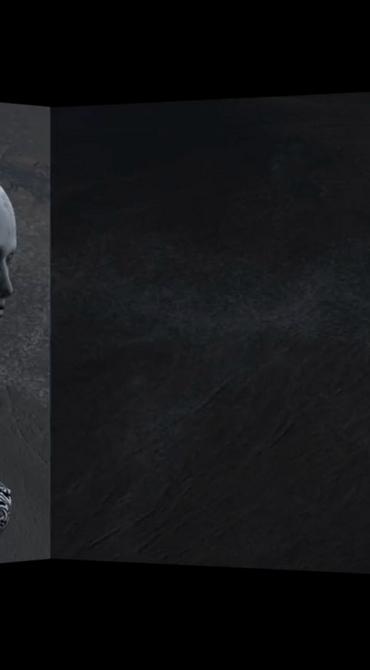
Captions 9


Like I mentioned previously, it was not the typical way of collaboration with a Music composer/Sound artist. I used to create films first and then add the music and sound later. But for equal respect of two different disciplines, I started music and film at the same time.
***From Simon HutchinsonWhen Heejoo invited me to compose the music for Unwearable Functional: Akinetic Mutism, she first showed me some sample footage, explaining the themes of race and gender that were the driving forces of the piece. Familiar with Heejoo’s portfolio and drawing from my previous work on these themes, I was thrilled to collaborate.
After showing me the sample animation, Heejoo told me that she wanted to approach the project like a music video, with me composing the music first, and her creating the animation afterwards rather than the other way around. This way of working gave me a great deal of freedom in the musical structure and form, driven, of course, by Heejoo’s clarity in the expressive goals of the piece.
As a composer and sound artist, I was particularly drawn to the theme of “mutism,” and how to sonically express the inability to speak. In the end, I created the entire piece from one 10-
Captions 10
second recording of a woman speaking, with the speech digitally processed so the she is never able to finish any of her words. At other times, the layers of her speech accumulate on top of each other dissolving into a dense, unintelligible wall of sound. This familiarity of the human voice combined with the

unfamiliar and unnatural digital processing echoes Heejoo’s uncanny mannequin-like figures from the sample footage.

As I was nearing the end of the composition process, Heejoo sent me several recordings of individuals talking to her about their experience of race,
gender, and society. Since the form of the composition was already set, the audio for these interviews became a kind of chorus, supporting the digitally processed voice. Occasionally, an attentive listener can make out phrases and sentences from these interviews, but their density more often obscures what
Captions


Captions 12
is being said, and, again, the human voice in the piece is simultaneously evoked and frustrated.

Since my works are not conventional form, I targeted audience who pursue a unique approach of arts. I talked, discussed, and listened, but I don’t take all comments as a crucial components of

my decision making process. I am trying to show my own voice in my own way. It doesn’t mean that I exclude my general audience. I am always researching and thinking of how I can approach various types of people with my own voice. I used to try not to use any language in my works. I wanted to appeal to the audience's’ emotion and intuition, rather than their logic and reasonings.
For now I am trying to work with slightly different contents to approach different audiences. I am working on 2 experimental animated documentary films based on the story of the holocaust experience and elder abuse. This is my first time trying to do documentary projects. I wanted to expand my interests from women’s issues to human beings who are isolated and suffer from social and cultural status. Visually, I am expecting to create somewhat figurative but abstract images as usual. And also, I am researching virtual reality and gaming interactivity projects based on racialized sexism.
Lives and works in London, United Kingdom
That’s How Summer Passed

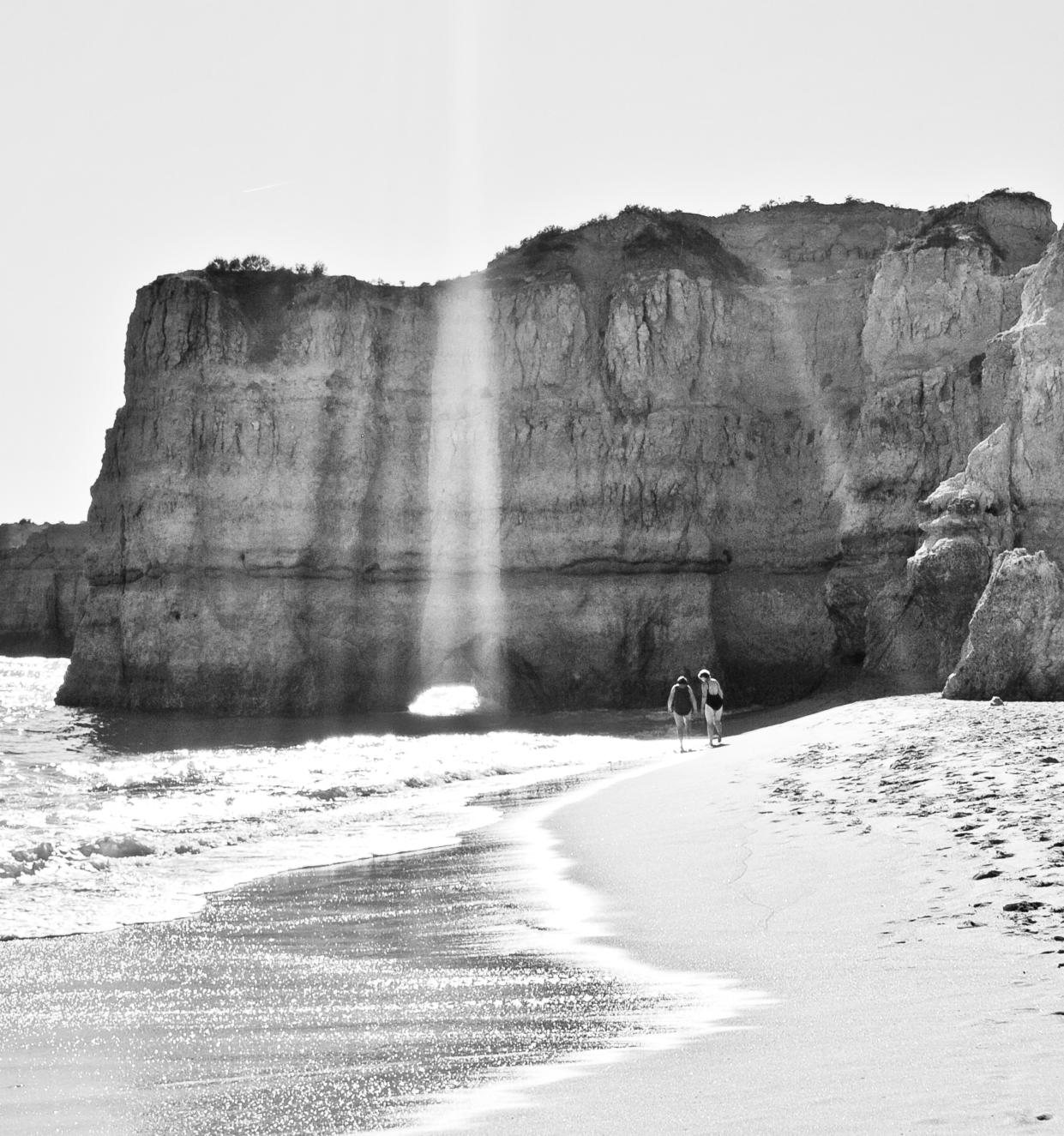
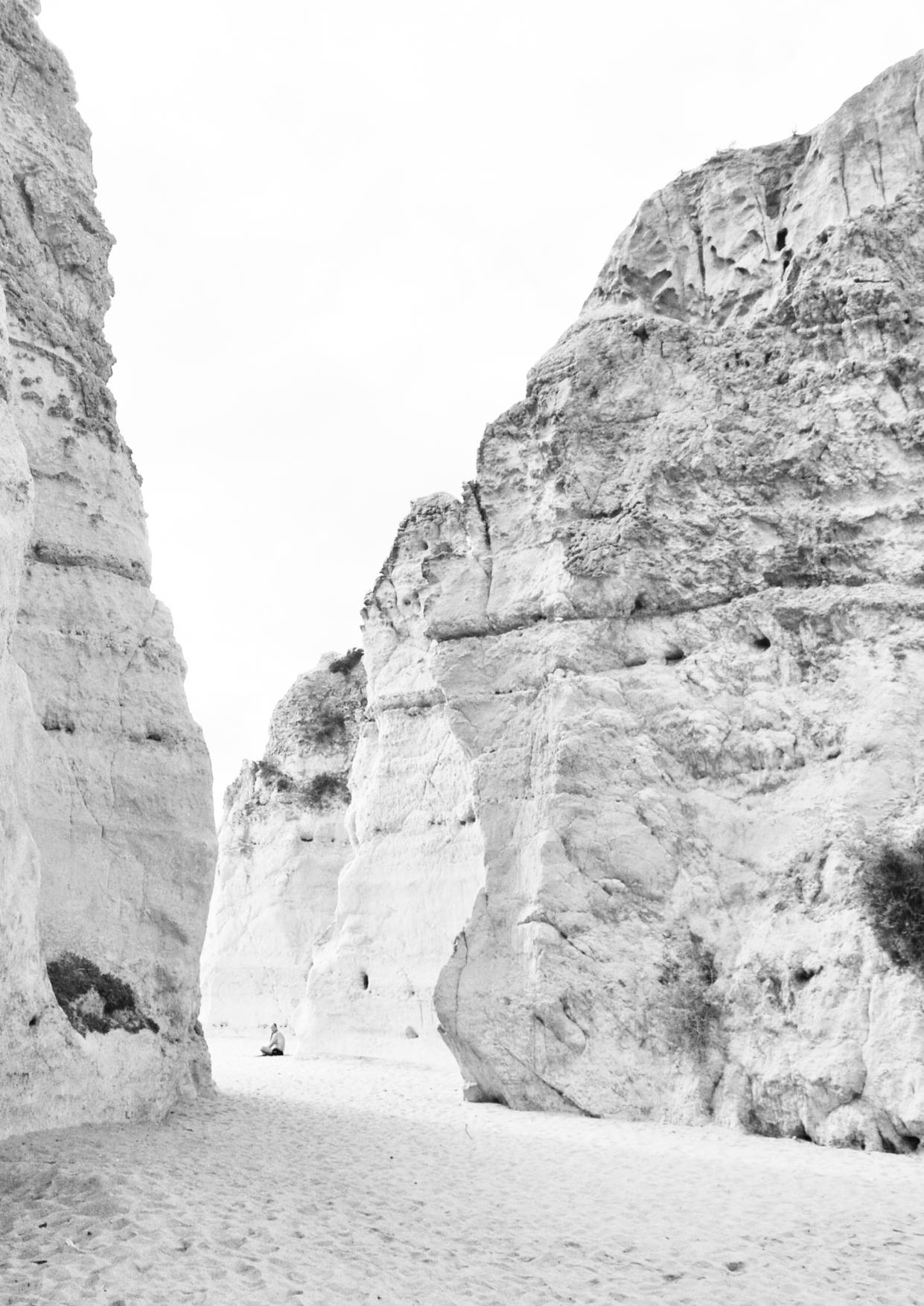
Hi guys, and thanks for your time! Yes, quite diverse background…. but I found that in the diversity is my best quality. I studied business and work on finance for many years (still doing it), but painting and photography allow me to take out from my mind all the structures and be completely free. I enjoy being involve in both styles of projects.
Exhibitions:
“Wanderlust Photography Exhibition” – London, UK – May 2015
“Painting & Sculpture Exhibition” Candid Arts – London, UK – Jun 2015

“Lost” Solo Painting & Photography Exhibition – London, UK – Jul 2015
“That’s how summer passed” Photography Exhibition – London, UK –Sep to Nov 2015
“FotoFest Biennal 2016” – Texas, US – Mar to Apr 2016
“Follow the Sun” Photography Exhibition – London, UK – Jan to Apr 2016
“Novus Conceptum” Contemporary Fine Art Show – Texas, US – Apr to Sep 2016
Agustin CiarfagliaTravelling is crucial in my life. Since quite young I started travelling, and I found it very inspirational. I do try to avoid touristic places and try to spend time with local people, and that is what really fulfil me.
I do not like to have any structure when I work on artistic projects, while unconsciously i think i have…..
My painting start with a black canvas, and I put all my emotions on it. I am alone in my studio with plenty of different materials (oil paint, acrylic, paper, wood… and many things that I find in the street….) and I turn on my mood and emotions to the canvas.
With my photos the process is different. While I am travelling, i do feel that all the trip can be sum up in a concept. It can be because of the place per se, the music i am listing during that time, the people that i am traveling with, the weather….. from that period one feeling arise on me, and the photos that I take start reflecting that.

As mentioned below some of my trips can be sum up in a concept, and that is the case with That’s How Summer Passed. I
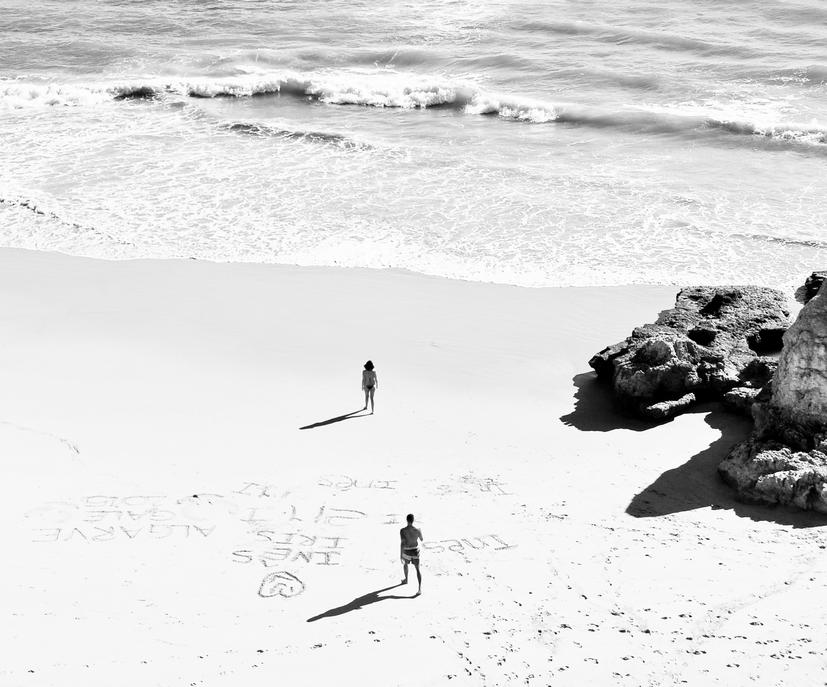
spend the summer around Portugal with my wife. The feeling was of simplicity, and enjoying small moments every day. It mainly shows how we spent that summer, going to quite and empty beaches.

Definitely it try to show my inner self. I try to take or redirect my art to the feeling that I have.
I do love photography and I definitely consider it a great way of express oneself. While I feel you are quite limited by the place where you are and the beauty of it. With the painting I think you are more free, and the creativity is not limited to any circumstance or external factor.
With my photos i am quite conservative and monotone with the color. During the last year I think the beauty of the photos should come more from the structure of it rather than the colours. That is why my last two series are black and white.
With my paintings completely the opposite. Usually I do not like shapes or forms, and the beauty depends on the colours and material. That is why I have as many colours and materials as possible in my studio.
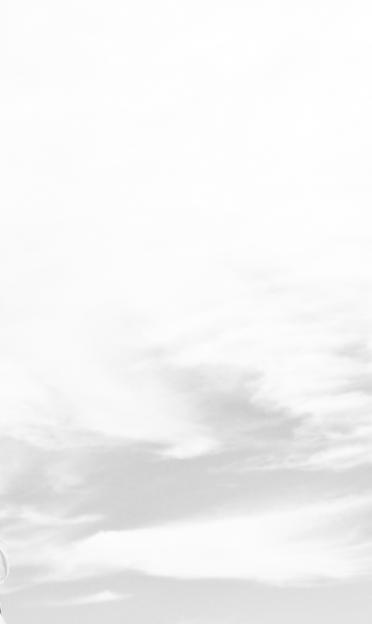

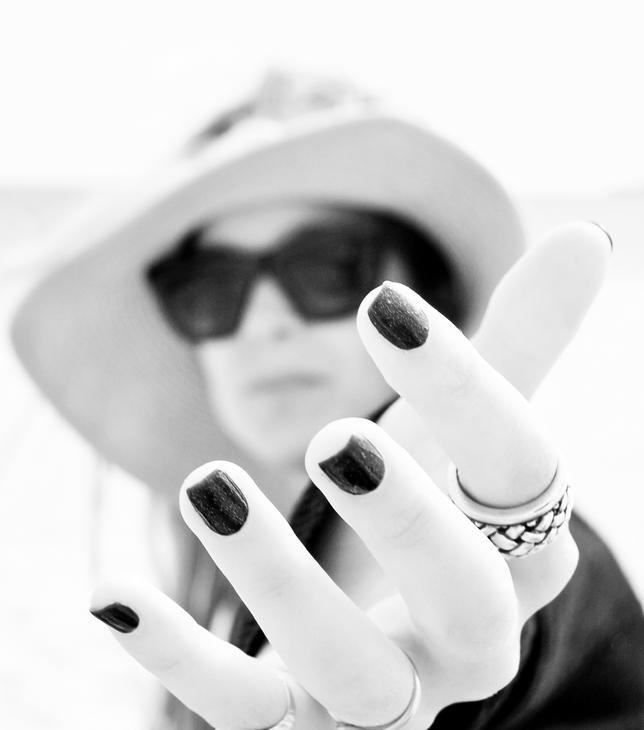




My paintings unconsciously show a particular feeling and emotional state. Sometimes I spend months working on a particular work, or in other case maybe 1 day. The question that usually arise is when you consider that artwork is done…. it is the moment when i do not feel nothing is missing or nothing is superfluous.
My only interest is that the viewer get surprised with my work and that it generates a unique feeling. I do not want to be something that it looks nice. i want that the viewer feel something more…




Your Mess Is Mine

No…. i do not try to think on the viewer when i make my work. The process is totally personal, and I never want to be conditioned with te viewer perception. Not being conditioned socially and economically for the selling of my artwork, allow me to do whatever I feel.
I am involved in two projects right now. One is the art of a new album release from Paul Hussey, an amazing singer and songwriter from London (www.paulhussey.com). You should check his work. And also on a new series of photos…..
An interview by , curator and curator

Live and work in Brazil



An interview by , curator and curator
was considered a ploy to fool naive people. Their inner need for the spiritual in a materialistic environment led them to art, in a search for untainted values. It was nonconscious at the beginning, but they came to understand it as a path not different from what many artists had chosen before, as is the case with Kandinsky’s abstracts or Ansel Adams’ photography, where the spiritual seeking is different from plain religious art. It is more of a personal spiritual search.
Marcela completed her undergraduate studies in design in Rio de Janeiro, Brazil. Throughout and after college, she produced a body of work in Terracotta sculptures before beginning to work with digital media, looking for approaches that older artists had missed, in a world where, as Picasso said, nothing is new. Daniel worked in biological research until he was 32 years old, before he began a collaborative work with Marcela. Expression and technical rigor became a synthesis that originated in their 30 years together as a couple, their work is more than one or the other. It is a kind of non-verbal dialogue between people who share a life. The musician, José, is their eldest son, who started playing piano at the age of seven. He is now 19 years old and pursuing other interests in college, but keeps composing and producing music for the collective. Both Marcela and Daniel had communist parents, by whom spirituality
We might say that everything is planned, but then the ideas just don´t work as expected. We chose to work with natural movement, used as the primary layer of our pieces, because of its nonlinear dynamics. A line in the surface of a river never happens in the same place with the same shape. However, it’s not random either, we can expect a line in a given place in a water stream, we just don´t know when it’ll happen and what exact shape it’ll be. This “not random but also not linear” property gives a kind of life, an apparent will to the motion found in nature, especially in water.
The video capture depends on the light, the clouds above and on the mood of the river. It is not feasible to control them. It’s not a movie set. So we have to embrace chance.
That unpredictability is tamed by the restless selection of shots, based on our
taste. We don´t subscribe to the postmodern idea that everything should be pardoned in the name of spontaneity. On the contrary, we only show what we really like even if that consumes lots of time and
work. It’s a digital work as time consuming as stone carving.

The water in the river flow is a common theme for many nature photographers and

motion artists. It’s like a nude for the traditional painter, just a theme. The challenge was how to make something new on such a common subject and still acknowledge the richness of the theme
itself. In Refluir the initial footage comes from a variety of water streams and rivers in the state of Minas Gerais in Brazil, including granite (bluish tones) and quartzite (reddish tones) based geology.

The final multilayered assembly comprises three visual levels: the reflection (images from trees that are over the water stream), the refraction (the distorted objects on the river bed) and the water surface (altered by
the river bottom conformation). The water flow was then transformed in masks, sort of alien creatures that where created when we experimented with symmetries. It’s not meant to be a style to be repeated, it was

just an idea that worked. It took hundreds of attempts to get something unique.

When Abstractionism of the early 1900s artistically succeeded in simplifying shapes, they did not intend to produce more in less
time, they were revolutionizing painting, not rushing in an assembly line. But abstract cinema pioneers realized that a new art form could come from joining simple modernist shapes with moving

pictures technology that was spreading on that period. Walter Ruttman, Oskar Fischinger and others started their new branch of art. Soon they found a big problem, even the simplest forms that they
took as inspiration, Kandinsky´s or Braque´s, gave too much work to set in motion on film. Without technical shortcuts, it takes more than a thousand drawings per minute. With huge personal effort they were

able to set this new language but they were scarcely followed due to this constraint. The aesthetical possibilities were there, the long dreamed experience of seeing sounds, abstract moving paintings. It’s important to
pay respect to the people that started this approach, not to hide their achievements.
Movement without sounds seems odd or artificial. So the pioneers set the music to

“drive” the visual. And this idea has been followed by most artists in this field. The abstract dynamic visual “demands” a driver, be it sound or music. It is different from an installation with sound. It is something that from the very beginning was music entangled with imagery.
Beginning in 2009, we spent two years to set an ambitious exhibition here in Brazil, without success. It was an experience that humbled us. When the government likes the art project, private companies don´t want to fund it, and vice-versa. It is a job for professional producers, not for artists.
Public art demands the government to set its content. So it easily becomes an official art, which today matches the identity politics agenda, far away from our work. Of course, the public at large, not just the art connoisseur, should have the chance to experience art, especially in times when ugliness is so pervading and aesthetical value has been degraded. The challenge for the artists is to find a way to show their work outside the state commissioned venue.
Public space could be gently “occupied” by video projections. The owner of the building would allow it to bring visibility to commercial stores. The government would just give it a permit, without public expenditure or bureaucratic committees. Passers would have their experience of
visual motion art, different from painting, dance or music shows. The artist would find a venue, however one without monetary return. Another possible venue related to this idea would be TV walls in shopping malls.

If on one side abstract motion painting has huge aesthetical possibilities, on the other it is still not commercially viable overall. It is amazing how many great works have been produced by artists who created just
one work and disappeared after that. Creativity is demanded also on the sale side of this art form. We hope to see the day that entrepreneurs will be able to find the

right venue to show and sell motion paintings.
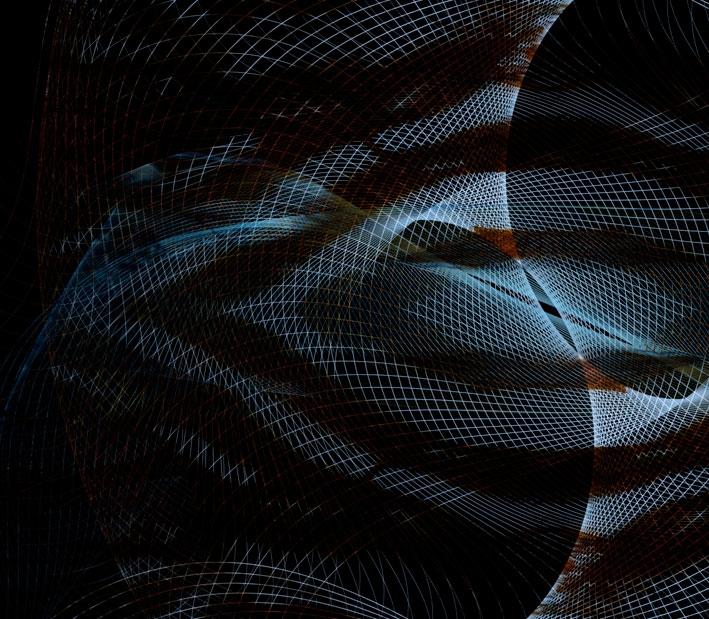
We love to see people finding things that we haven´t designed. Their eyes and minds are part of the outcome. Each second, different shapes are rendered and the public gets that. The “death of the author” is the most
interesting idea in the postmodernist repertoire. It is not that the artist is irrelevant, but that her work would enable multiple views. And motion paintings created from natural phenomena are especially rich in this aspect, allowing not just one or two interpretations, but a multitude. We view that as an artistic success.
Our world is way too filled with messages, to the eye, to the ear and to everything that is open. They say that between home and work the average person sees hundreds, maybe thousands of different advertisements and warnings. So we live in a constant overflow of information as cognitive zombies. This is one of the reasons that it’s difficult to stop to perceive and enjoy art. And art becomes healing when it sets a break in that informational push. It says: hey, stop, take a breath, this is not advertising.
On sound and images: we don´t think of them as two different media. We set the music as the canvas and add the visual following the melody and its timing. Both come from independent choices but have to fit over each other and become one. At the end they are just a motion painting, the same way a painting overlays its canvas, which stays there to keep the colors where they should be.

The idea of visual music is at least as old as the XVIII century with the creation of the Ocular Harpsichord by Castel. The musicians were the pioneers of this idea, especially because music was very well coded at that time. Our explanation is that the visual “flows” from the music, like water that comes from the earth in the spring. But any attempt to decode the relationship between visual and music would hinder new approaches.
We absolutely agree with him. We have been working together with art since 1995. We have been watching the same things, thoroughly discussing and reaching aesthetical consensus. So when one or the other starts something, the details are comprehensively discussed at the end, with the overall idea being set firmly in the beginning. It’s like building a house, where the basic sketches have an agreement upon them. The finishing will be discussed but we don´t move a wall when it is time to paint.
In Altera, when the other is creating it is easy to become very demanding. The other two are always critical of one´s work. By now we kind of accept it. And of course there are alliances and settlements that
come from family life, matters outside the art world; it’s not different from a family business.


An important question today is: what the artist wants to convey to the public when
the universals are gone? The identity art, when the artist talks about his or her race or gender, is today´s mainstream, but as we said this is not what we do. We look for an audience that can spontaneously enjoy our work, without the stamps of personal

identity, just from an aesthetical connection to the oeuvre. We hope that there are still people who are able to judge by their own taste, a bet on the autonomous individual in times when it seems to have vanished.
If we don´t sort people out in groups as advertisements do (like middle age suburban wife, etc.) or postmodern artists do (African American, transgender, etc.) what is left is a shy, outcast individual, be her an Inuit or old Philippine fisherman. We guess that there are people who do not fall on the official minorities and are not addressed in the whole postmodern discourse. They are the ultimate minority. We try to reach this individual through the simplest art strategy: by sharing taste with them.
The next project already has a name, music, primary footage and concept. Now we have to look for time to assemble it, which is the hardest part.
We’ve worked with different media, looking for our right match. Now we have it and will probably keep doing abstract motion painting for the rest of our lives. Evolving the primary footage and assembling it in a way that it loses obvious resemblance to the source.
We would like to thank abens for this opportunity, and especially for opening its pages to artists outside the mainstream.

Lives and works inToronto, Canada


 The Factory Worker #2
An interview by , curator and curator
The Factory Worker #2
An interview by , curator and curator
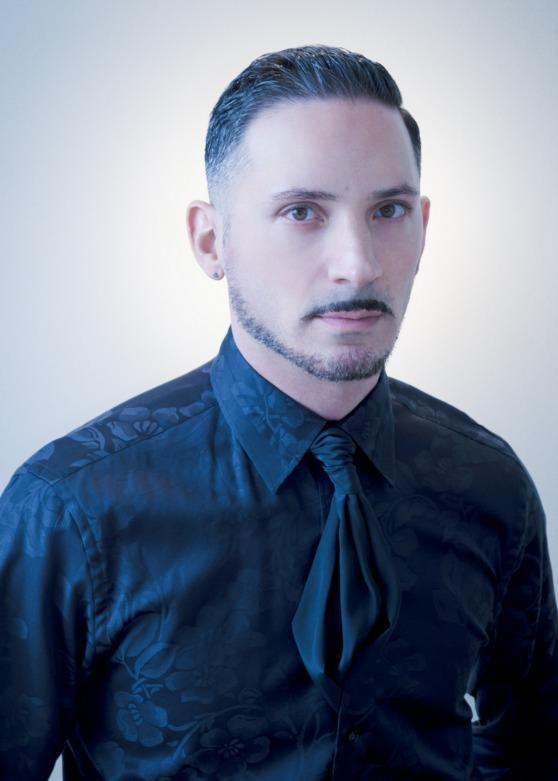
OCAD University was a great experience because it gave me a really strong foundation to produce my artwork, conceptually and technically. I was exposed to many different types of art and artists which opened up my mind. As well, OCAD was a place where I was encouraged to experiment with my work, and receive constructive criticism from my teachers and peers. Studying art history from various cultures also had a strong influence on my art. For example, I love Italian Renaissance art and although at first glance my work my not look as if it’s been influenced from that time period, it has. I’ve also been inspired by a lot of traditional Asian art, and religious iconography.
Most importantly, it was during school that I was able to figure out what I wanted to do with
Michael Trozzolo is a visual artist based in Toronto, Canada, primarily working within the photography and film medium. He has a BFA from OCAD University. Using self-portraiture, coupled with highly constructed and digitally manipulated imagery, Trozzolo visually simulates society’s unattainable desire for an idealized reality. During those times when these desires are unrealized and melancholy sets in, hope comes into place. It is this moment of hope and despair which Trozzolo’s imagery aims to create. Within his work, Trozzolo connects these desires and hopes with the political, cultural and social dynamics which are prevalent in today’s world.
Trozzolo was the recipient of the George A. Reid Award and the Cylla Von Tiedman Photography Award. He has exhibited in numerous solo and group shows throughout Toronto, Montreal, Richmond, and New York City, and has participated in various annual art events including Nuit Blanche, Contact Photography Festival, and the Toronto Urban Film Festival.
Michael Trozzolomy work. I’ve always had a general idea of what I wanted my artwork to say, however, it was never clear in my mind. Studying at OCAD, specifically studying other artists’ work, I was able to clearly understand what my goals were,
the themes I wanted to work with and how I wanted to create my own work.

I have always been very interested in creating images which were highly constructed and fantastical, as opposed to capturing reality. This has been constant throughout my art practice.

As well, I love all the different aspects which are involved in creating my images. From the conceptual phase, to shopping for props and costumes, to figuring out lighting, and so on. This has also been a constant within my work.
In terms of themes, I’ve always been interested in the concept of desire. Initially the exploration of desire in my work focussed more on a dreamy, fantastical, yearning aspect of desire, whereas now, my work continues to explore the

concept of desire but more about how it relates to social and political issues, and the consequences of desire. I think it is our desires which drive us. Almost everything we do is controlled by our desires and I find that
fascinating. It is our desires which rule our world.
Visually, there are still some constants within my work. I continue to use bright colours, most

of my pieces are portraits, and they all have a fantastical element to them. However, through a lot of experimenting and trial and error over the years, my work has become much more cohesive and refined. When I first began
creating images, I was very interested in combining photographic elements and illustrative elements in my work which were very easy to point out. Now, I’m more interested in creating images which blur the

line between photography, digital painting and collage.

The idea for The Factory Worker series evolved from a few different ideas. Most of my work begins with a visual inspiration, and the initial idea for this series stemmed from an idea of

creating a portrait of Buddha. At this early stage I wasn't even thinking about any social or political issue to explore, it was simply a portrait. As time progressed, I decided I wanted to create a series that was a commentary and
informative, and dealt with issues that were important to me. I was watching a documentary (I cannot remember which one at this time) and it referenced Livia Firth and the incredible work she is doing for garment factory workers. It was

#1, Film Still

at that point that I decided I wanted to produce a body of work which dealt with the abuse and inhumane treatment of factory workers.
Initially I wanted to create a series of portraits which resembled a group of soldiers. The idea of an army of factory workers was very appealing to me because the hundreds of thousands of factory works, in a sense, is very
similar to an army. Both are massive, powerful, driving forces. However, as time progressed, I thought the idea of the army didn't really work and went back to my original idea of creating a portrait of Buddha. I wanted to express this idea of how we as a society have lost touch with our spiritual sides and have become disconnected from each other, and have become obsessed with products. Our desire for stuff, and our need
to feel satiated instantly has created this insanely huge consumerist world.

I think many of us buy things and don't really think about where they are coming from, who is making them, and the working conditions for these people. I think deep down we are all aware of what is happening but have decided not to think about it. In a sense we have
become a less compassionate society and the focus is on oneself, which unfortunately leads to situations like the exploitation of the factory worker.
I think symbolism in art can be a great tool, however, it can also hinder a piece. It really depends on the artists’ goals. I think if the artist is concerned with reaching a large audience and having a very specific message being easily expressed then maybe symbolism might not be

the best tool to use. With that said, I personally love using symbolic elements in my work. I think it creates intrigue, creativity and an interesting narrative. It may limit the understanding of my work and it forces the viewer to make a stronger effort in understanding my work, but I personally enjoy using it.
In my series, CreamSoda Please? I use a lot of symbolism and although the viewer may not necessarily get exactly what I'm trying to say, I think the narrative quality of the triptych allows the viewer to create their own story line. I know not everyone will understand my reference to Japanese Maiko and Geisha culture, but I think that element of it not only serves a purpose to
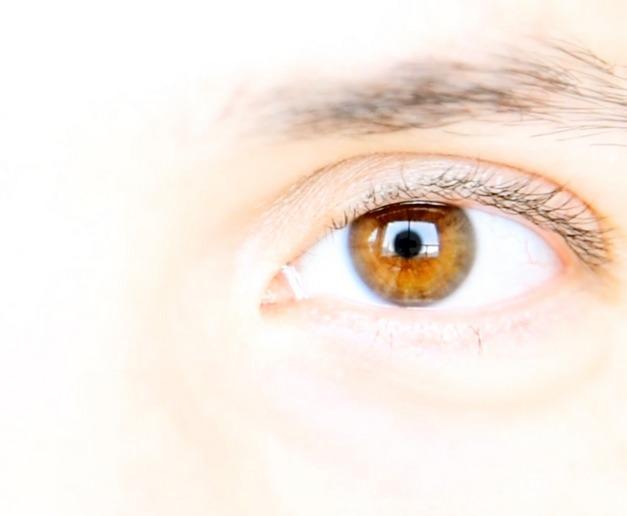
the story line of the series, but also ads visual interest.
I think the role of contemporary art really varies depending on the artist, their purpose for making art, the purpose of the piece, and the viewer. I don't think art necessarily has to be political or comment on social issues, nor does it have to be meaningful. I think art can be simply beautiful or aesthetically pleasing, and

serve the role as eye candy. Art can also be ugly and uncomfortable. However I think good art will always evoke some sort of emotion from the viewer and I think that's the role of art. I think good art should encourage progress and push boundaries, it should open peoples minds and should never be trendy or cliché.
I like blurring the lines between the real and the imagined within my work. My art combines photography, which at times can be considered real, and photo-manipulation which can be

considered imagined. I think this concept is very representative of our daily lives, especially in regards to memories. Our memories aren’t really exact representations of what has happened, rather they are representations of what we experienced coupled with our own
imagination filling in the blanks. I think our memories are also deeply connected to our desires and aspirations, not all, but some. I enjoy working with this theme because again, it has to do with desire, how a memory can trigger our desires and vice versa. In Broken, I

CreamSoda Please? #2
used a statue to represent a memory or desire because I think as consumers we attain and collect things which are representative of our desires, dreams and memories. When the statue shatters, it’s symbolic of our aspirations and memories shattering.

CreamSoda Please? #3
I don't really consider the immersive nature of the viewing experience in my process, at least
not in the beginning stages. I want to create work which is eye-catching and allows the viewer to become immersed into a particular piece, however, I don’t consciously think about

creating art which would facilitate that. I try to create work which would catch my attention and make me stop and look at if I saw it at a gallery or public space. I do take into consideration the size of the piece, the colours, composition and how all these elements interact with each other and create a particular setting or mood for the viewer, however it’s usually catered to what I’d like to see and what I think works.
Photography has become a very important medium in contemporary art and the world because it creates this conflict between reality and fantasy. At times it can deceive the viewer and to me, this is very interesting. Even in photojournalism, the viewer perceives the photograph as being real, however the image is just as constructed as my images are, to an extent. This conflict makes photography very interesting and somewhat reflective of the society and the world we live in. Photography in itself is a commentary and reflection of what is happening globally. When you look at the accessibility of photography to the every day person, the ease of creating photo- based work and how photography is being used, we can see that photography has become incredibly important. With all that said, I also think photography still doesn’t get the same type of respect and admiration that a painting would get, possibly due to the ease and accessibility of it, or people’s idea of what art is.
I don't necessarily consider the audience when I'm creating work. Maybe I should, but thankfully the world is filled with different kinds of people with different interests. If my work doesn't appeal to one particular group of people, maybe it will appeal to another. As well, I’ve spent many years creating work for other people as I used to work as a commercial photographer, so when I quit that profession, I found a lot of freedom and liberation in creating art work that I loved. With all that said, I do consider how my work could be read, if my concepts are clear, and if there is a narrative. So it’s more about creating work which is readable and fluid as opposed to creating work I think the viewer will be interested in.
I'm not really sure how my work will evolve over time. I have in the past wanted my work to go in a particular direction or look a particular way, however, I’ve found that it doesn’t really work that way for me. There are some technics I’d like to try with my work which I think will also work on a conceptual level. I guess like any artists, I would like my work to become stronger and better, conceptually and technically.
I have many photo-based projects and film projects I’d like to work on, as well, I’ve just started to work with different mediums such as painting, collage and sculpture. I’ve used these mediums in the past, however over the past few years I’ve focussed on photography and film so getting back into other mediums is a lot of fun and it allows me to be creative in different ways.
An interview by , curator and curator
Izabela Mašić
Lives and works in Novi Sad, Serbia
 Izabela Mašić
Izabela Mašić
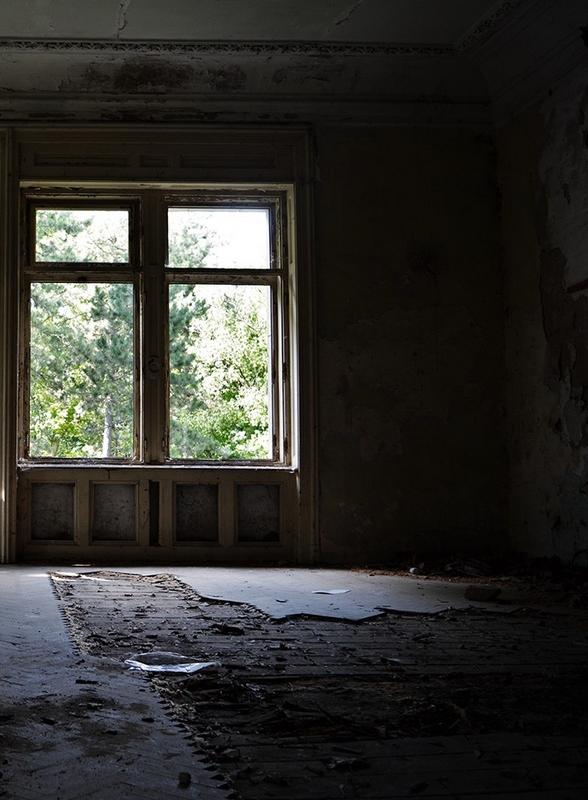

Izabela Mašić
 An interview by , curator and curator
An interview by , curator and curator
Currently, I am in the last semester of my bachelor academic studies at the Academy of Arts in Novi Sad. The past four years at the Academy had a major impact on my professional development. Before I started, I hadn't had any formal education in fine art. It was a very difficult and inspiring journey of constant change. Falling under other influences, learning from teachers, students, as well as other artists I met on the way had a great influence on me. Beeing willing to fall under different
influences is very important I think, especially at this stage of forming. I have tried to express myself in many different ways, ranging from different media to different styles in the search of who I really am and how to express it. I've learned to think and to observe differently. At the beginning I was finding inspiration in everything depicting it in variations of small exercises but slowly, during the time, starting to make a selection, removing some elements and adopting others.
Izabela MašićWell as an artist, the question of what I am going to do next is always on my mind. The past two years I've been interested in two, seemingly totally different, topics. One is abstract painting, trying to see geometrical shapes in nature and my views of the same, showing them using different textures, colors or just changing their position to find how they cooperate in the composition but always staying true to my personality. This series is mostly oriented to the outside world and how I perceive it, how I see myself or any other person in society. The other topic is more inward oriented, revealing more of myself, jet again the connection to the unique experiences of every single individual is present again. These figurative works mostly show one individual battling their "demons". As said earlier, since I am still in the search of my own individuality, my work may differs one from the other but the core idea is to show the fragile jet strong human condition.
Of course, there are schemes sometimes, but they change with time. Whenever I discover a way I want my work to look like, I usually try to change the, in this case, photographed material, so it suits my aesthetics. Instinct and intuition are very important to me. You have to leave much space for improvisation or just to allow things to happen, I feel like it can't and shouldn't always go according to plan. Usually, some of the best ideas emerge that way.
I try to show this position in a dualistic way, the human as an individual in a constant conflict with oneself and the human as a part of society. As you already mentioned with the quote of Gabriel Orozco, the place you live in always influences you to a certain amount. Since I was born and live in




a country that is constantly being struck by political turbulences, I can see the impact of it on the faces of other people in my surrounding. "Cemento Mori" is a series of
photographs taken in post- war abandoned buildings, some abandoned after the war and inflation in the nineties, some abandoned even after the second world


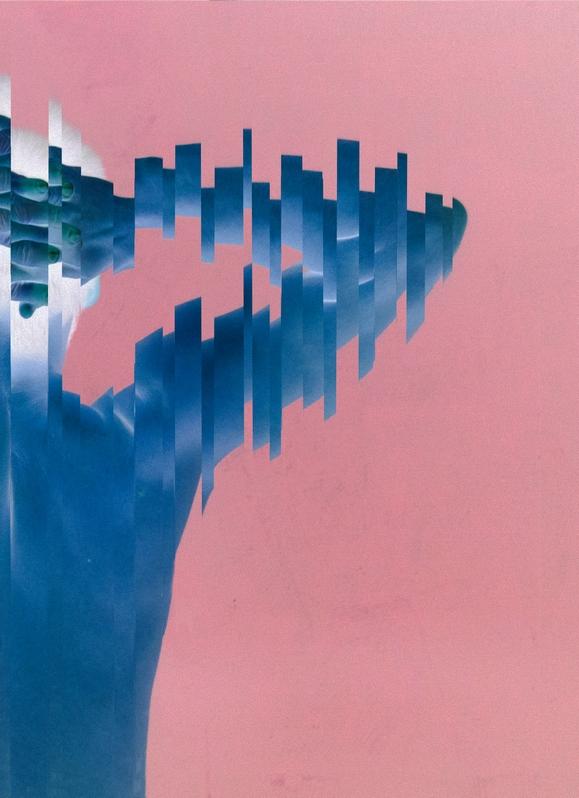

war by forced migrations. In my photographs,

I wanted to record this moment of metaphorical death, trough silence, melancholy, numbness and slow vanishing out of existence.
The color palette is partly influenced by my inner state of mind. Usually perceived a little bit melancholic, but for me, those colors also give away a solid and stable feeling. Every feeling is a mixture of colors, sometimes they don't logically represent the feeling a color usually does, but synesthetically they feel right to be in that exact spot they are. It's the same with the shapes. The texture is mostly inspired by the rustic textures one can usually find on decayed buildings, which are, aside of showing the temporary subsistence in this world, beautiful in their own way.




Searching

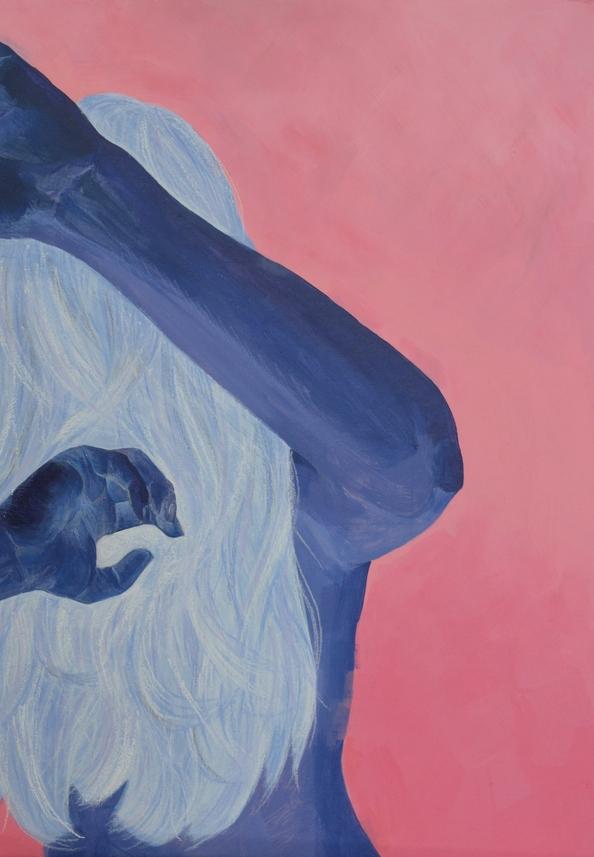
In my opinion the real and the imagined are always there, coexisting one with

another. Imagination is based on reality, it's our own new world built up based on something in reality that makes a big impact on us for some reason. It's an urge to change something, therefore, making
reality easier to cope with and it's the same with symbols, they are an easy tool to show those elements we perceive as an imbalance in reality.
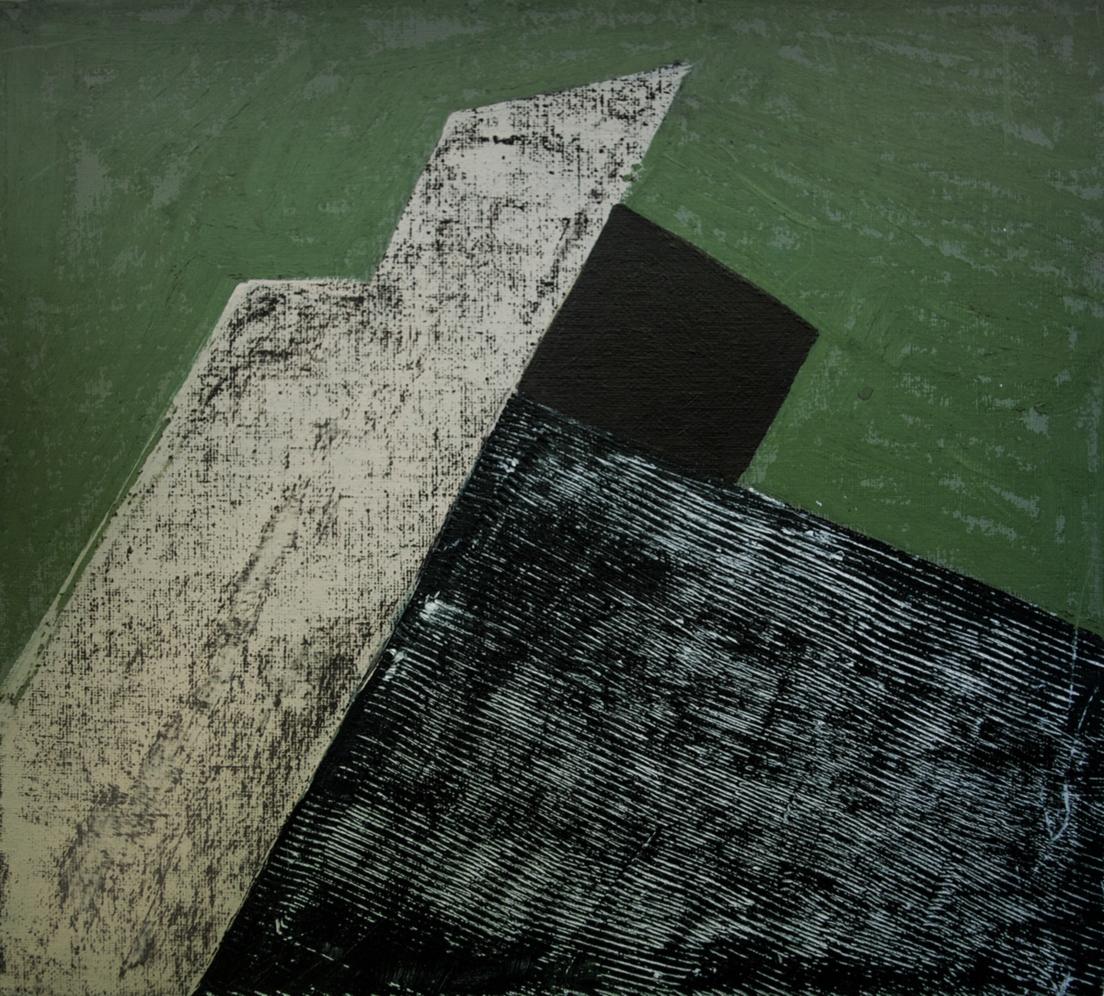

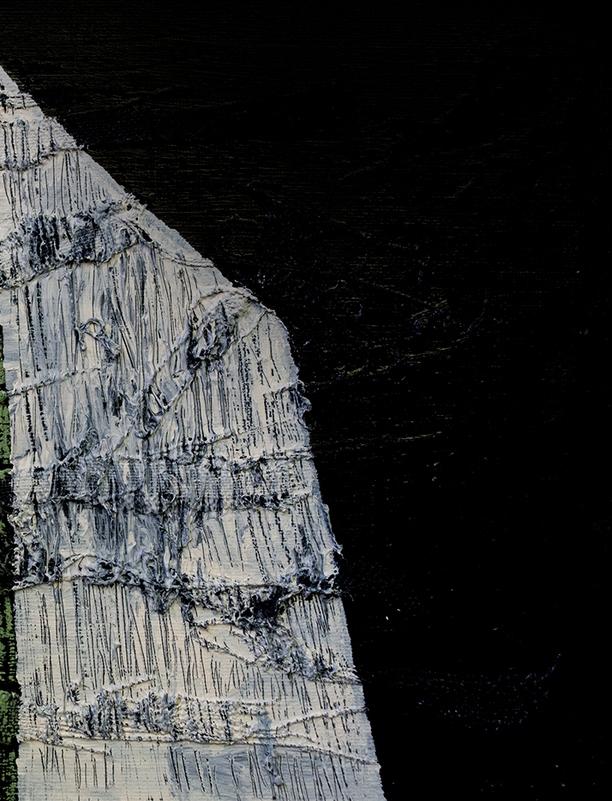

UA in green 08
Experience is one of the core elements of what makes us who we are. My work
shows how I perceive my inner self, but first of all, lets define what the term "inner self" actually means. I see it as a combination of personal characteristics and

experience. Everything that happened in life has changed us in some sort of way. Be it good or bad, it is now part of us. My creative process lays mainly in expressing this kind of
inner self, depicting the influence of the outside world on myself and reverse.
Tenderness is one of my first figurative paintings from the series "Infitialis" which

basically means negative or denial. In this series except trying to show what I mentioned above, I try to show the taboos of inner divergence like depression or
anxiety. People are often willfully blind towards this topic, neglecting it. Ignoring that there is some sort of problem doesn't mean it's not there, it's just being bottled

 Cemento mori FF02
Cemento mori FF02

up in a dark corner in our minds waiting to come out to the surface at some point of our lives becoming more catastrophic then it was in the beginning. So to avoid this, acceptance is needed and to learn how to be at peace with ourselves.
The audiences feedback is crucial. The relationship of an artist and the viewer is symbiotic.
An artist starts to create based on an idea but the true growth and quality of the work start to show in this cooperation. Since my work is also based on some social ideas, I try to observe the reactions of the viewer and sometimes during a conversation it becomes possible for me to see my work more objectively and I start to realise how I could further develop it and bring it closer to the understanding of the viewer, to make it possible to identify with.
Of course, the role of the viewer is very important in many ways. The role of an artist is basically nonexistent without the viewer.
An artist can only make a change if his/her message is received and shared among people. The conscience of people about a particular situation or problem should be raised.
People need to be more aware of themselves and people around them. We need to ask ourselves and review our position and quality in this world and how to improve it.
In my future development, I will mostly focus on further investing in my formal education in fine arts as well as to continue with my other non-formal education and projects.
I am also interested in new media and especially animation, whose possibilities I've just recently started to explore. I feel like it would give my work a whole different dimension and of course a new way to express myself.
Thank you very much for giving me this opportunity to share and present my work trough this interview.
An interview by , curator and curator

